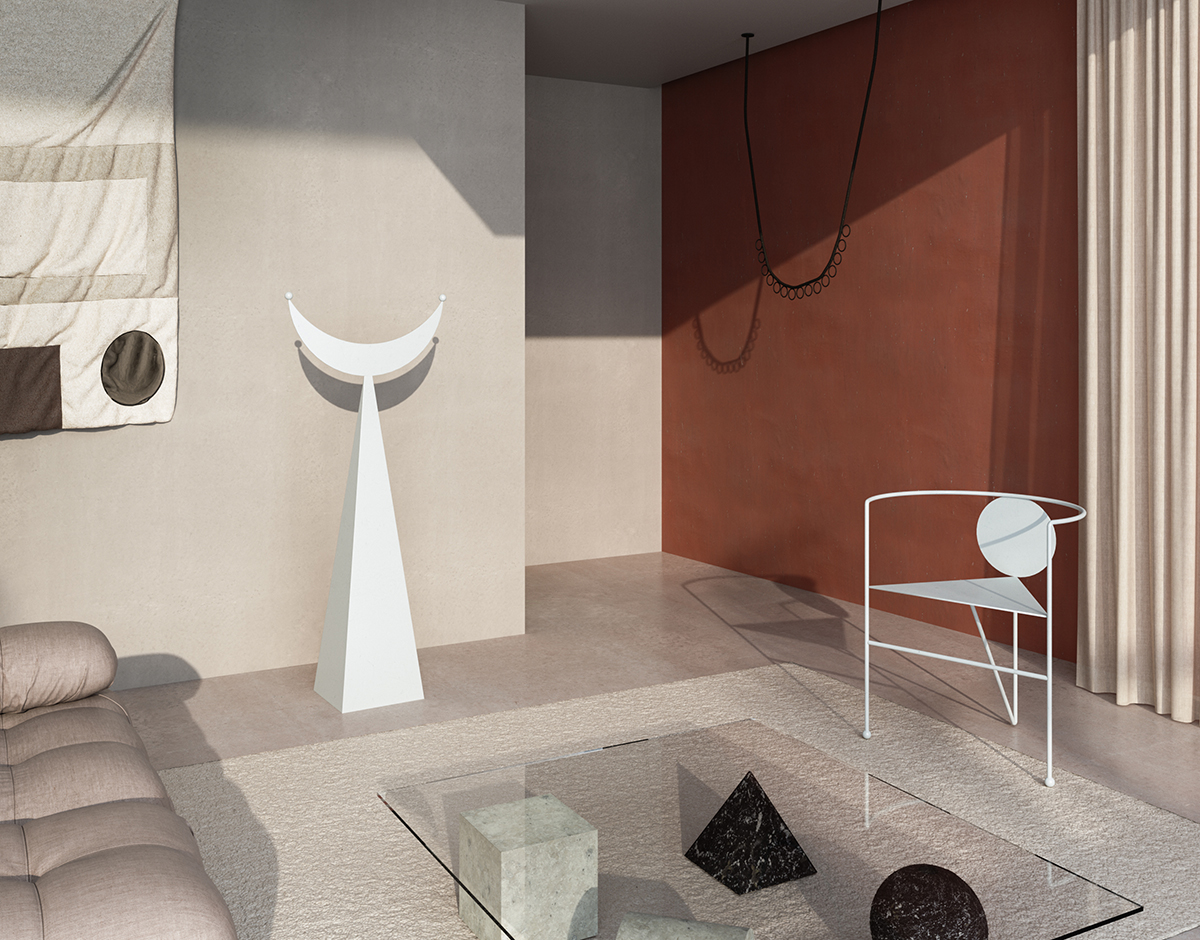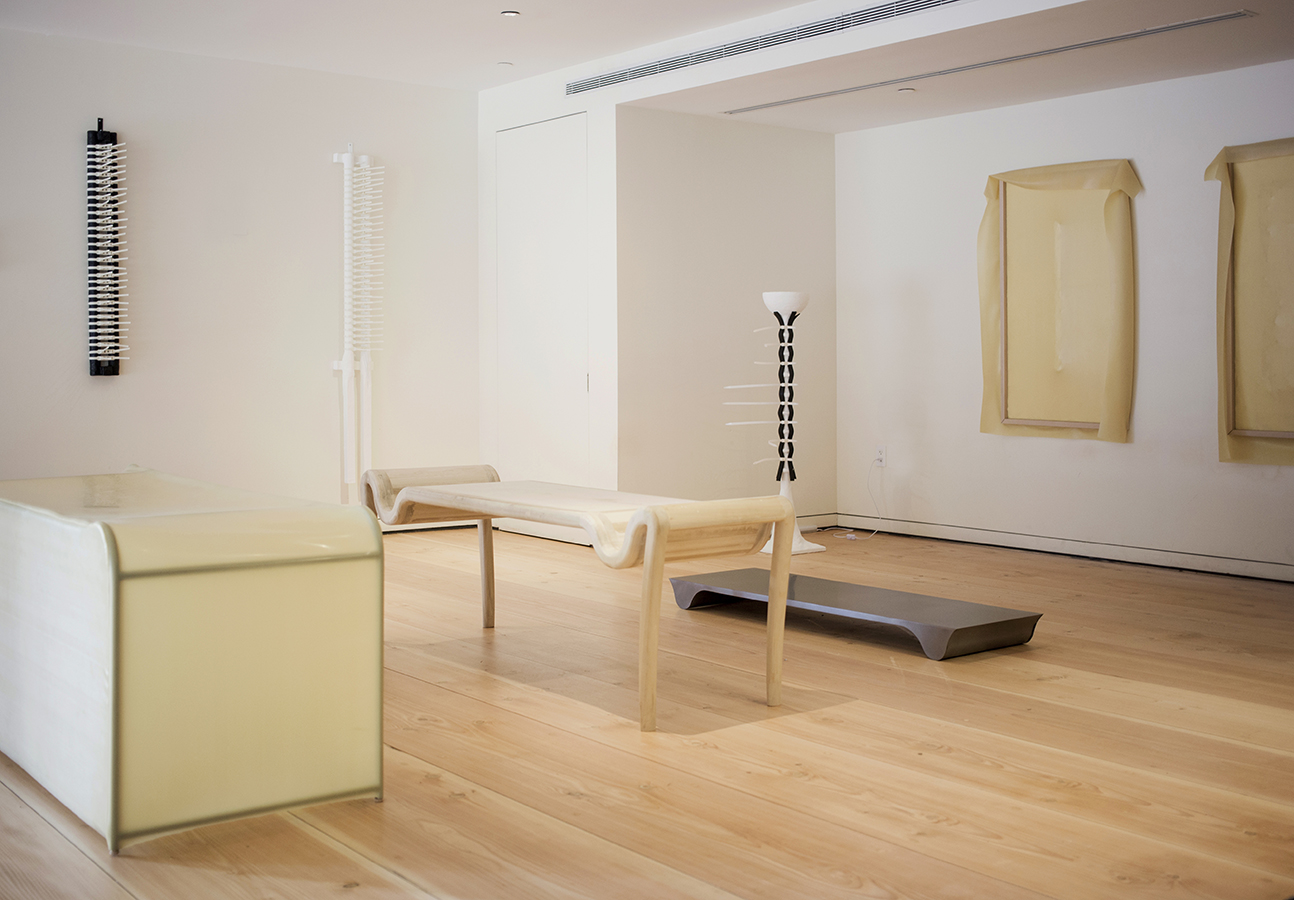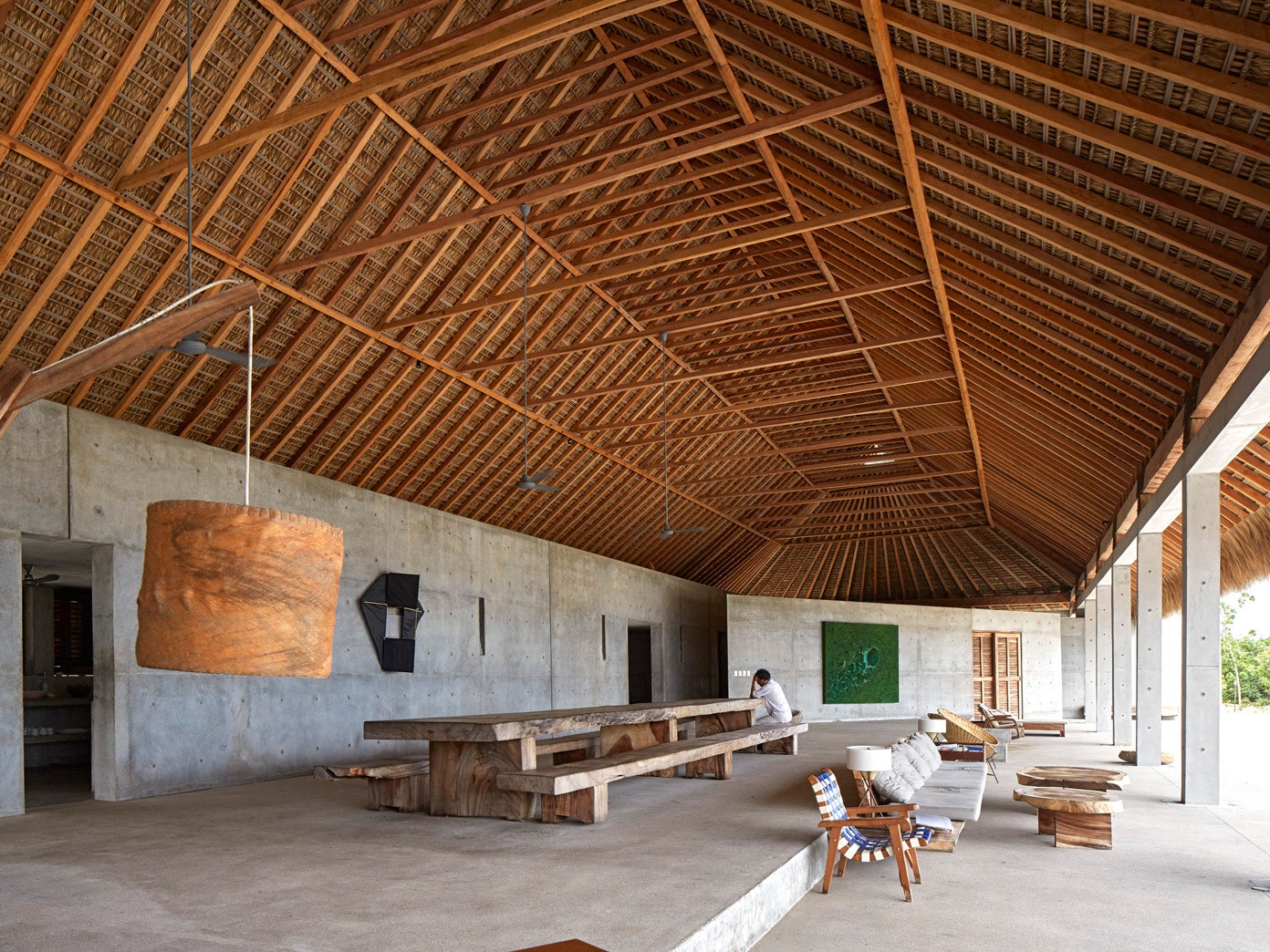
07.31.21
Saturday Selects
Week of July 26, 2021
A weekly Saturday recap to share with you our favorite links, discoveries, exhibitions, and more from the past seven days. This week is a bit different because in addition to our usual roll call of ’80s-inspired interiors and incredible craft projects, we’re featuring our favorite finds from this summer’s design school degree shows, including hits from RISD, Beckmans, RCA, and the Kingston School of Art.
Discoveries



We’ve featured commercial interiors by the London-based studio Sella Concept in the past — remember this terracotta and blue eatery? — but this is the first glimpse we’ve gotten of a residential project: a tiny Hackney flat owned by the British collage artist Natasha Briefel, whose vintage magazine–inspired art forms the backdrop to Sella’s postmodern flourishes, including squiggle lamps, ’80s-era B&B Italia sofas, and a pair of Big Cat nightstands. Photos by Genevieve Lutkin
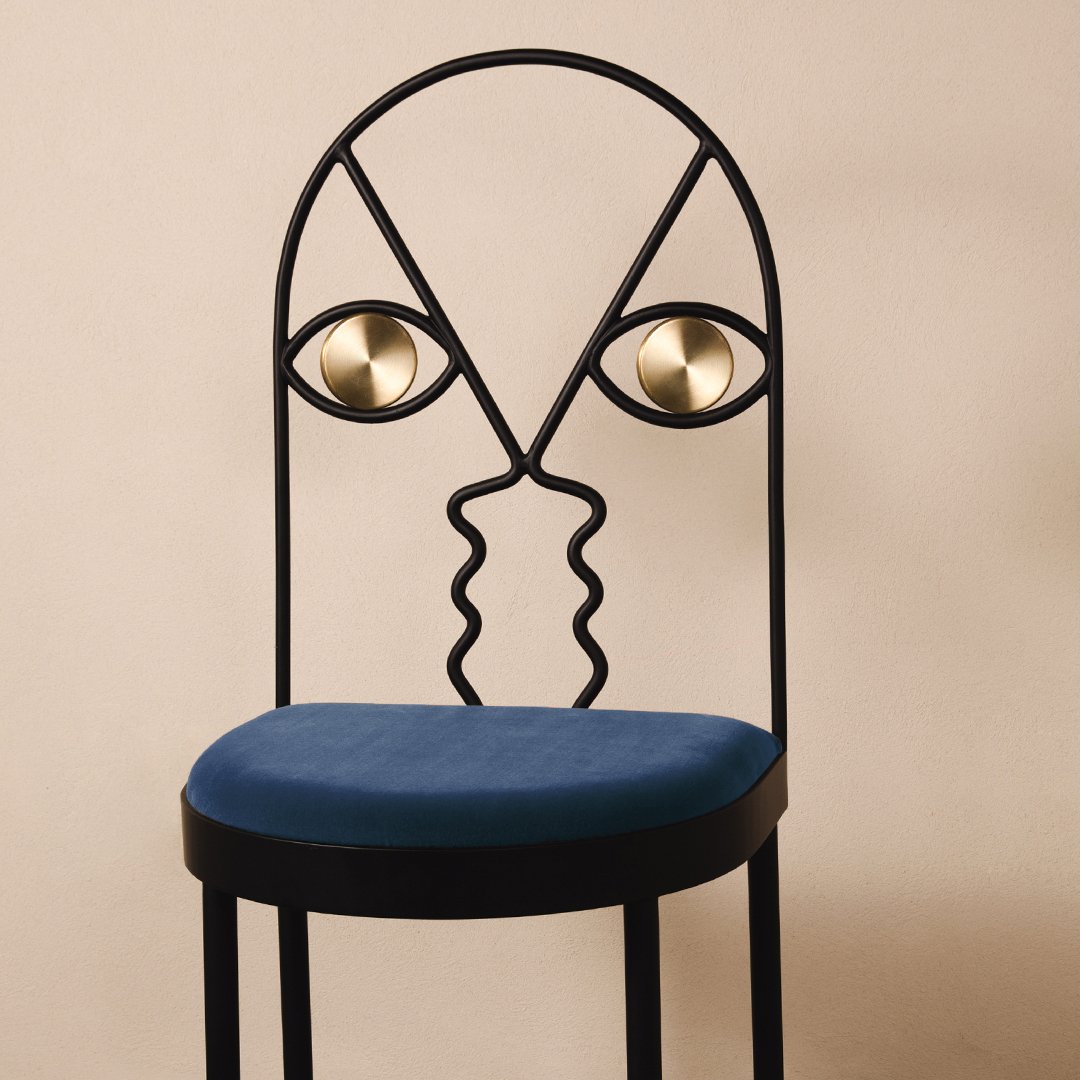
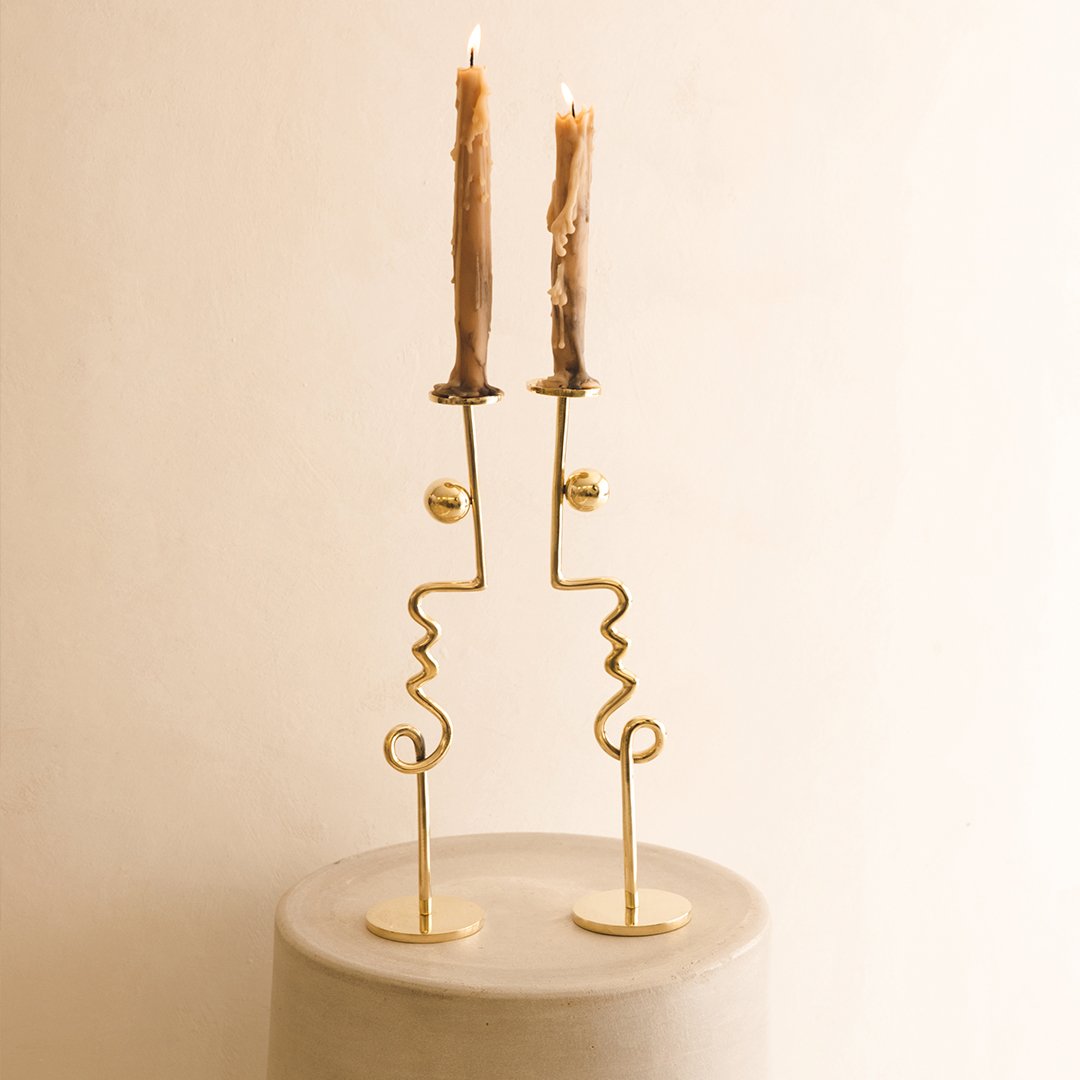
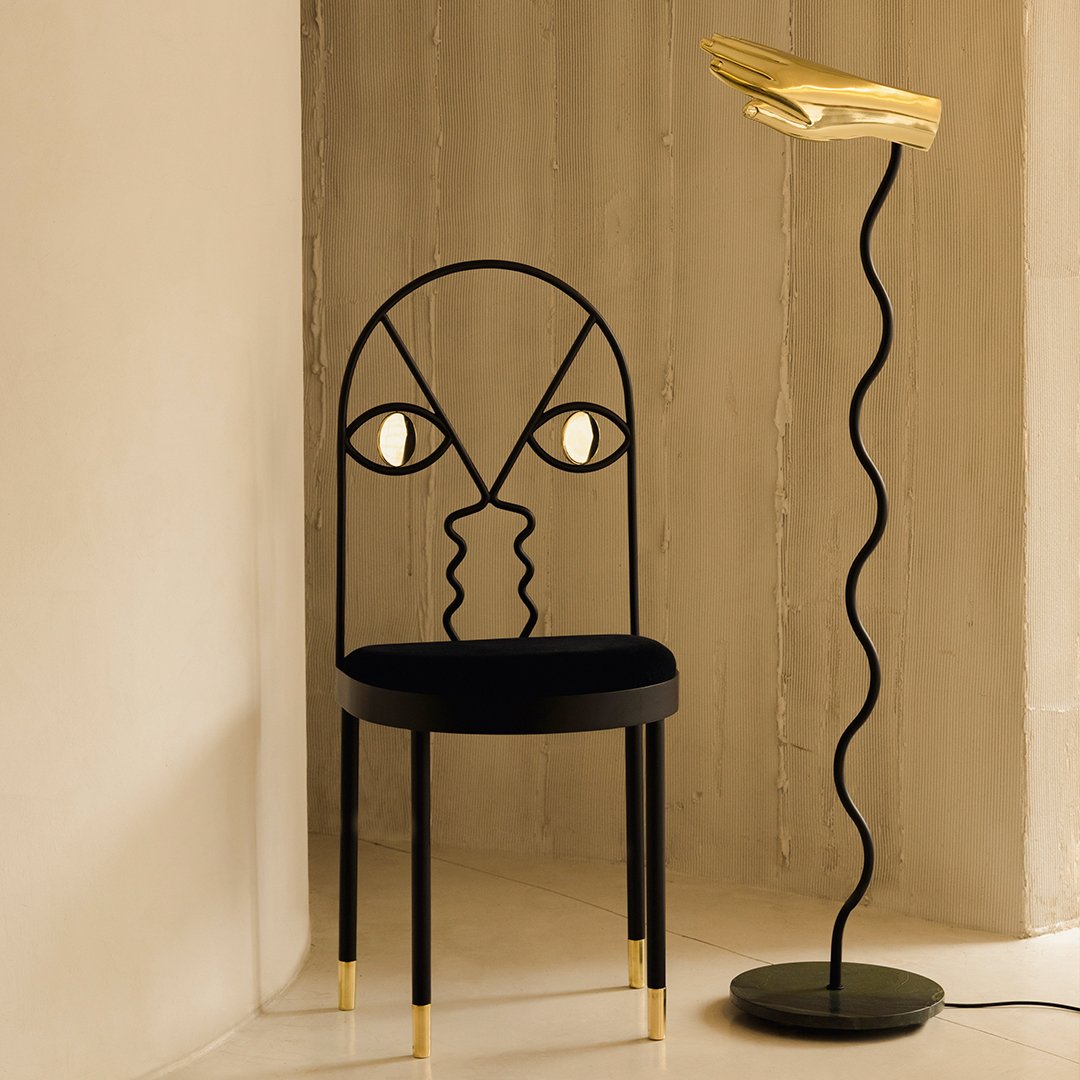
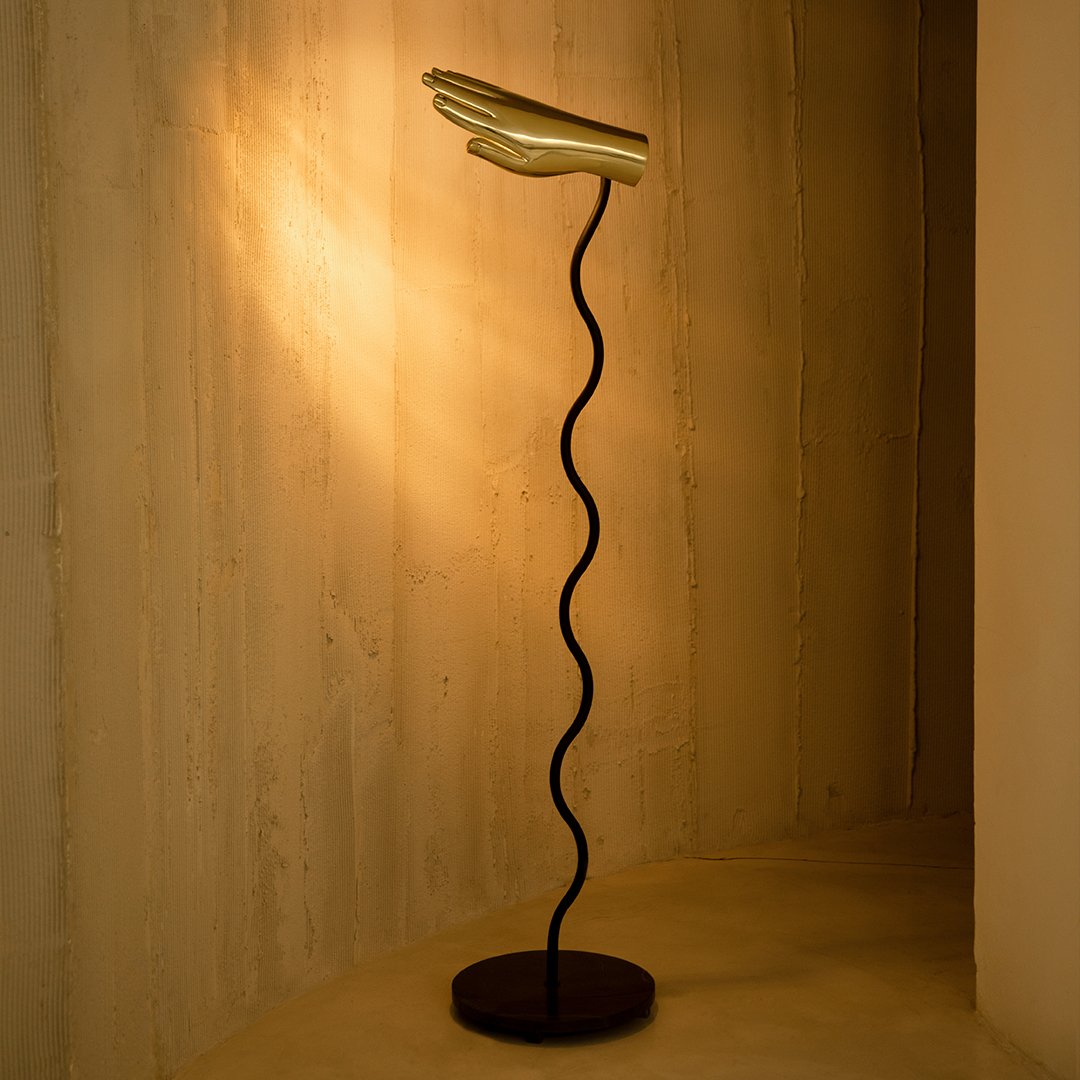
Speaking of things we featured back in 2018 (and squiggle lamps), Brazilian jewelry designer Paola Vilas recently launched a home line (that’s literally almost sold out), full of the organic, feminine body motifs that characterize her jewelry line. We particularly love the iron lamps topped with brass hands and the candelabras in profile.
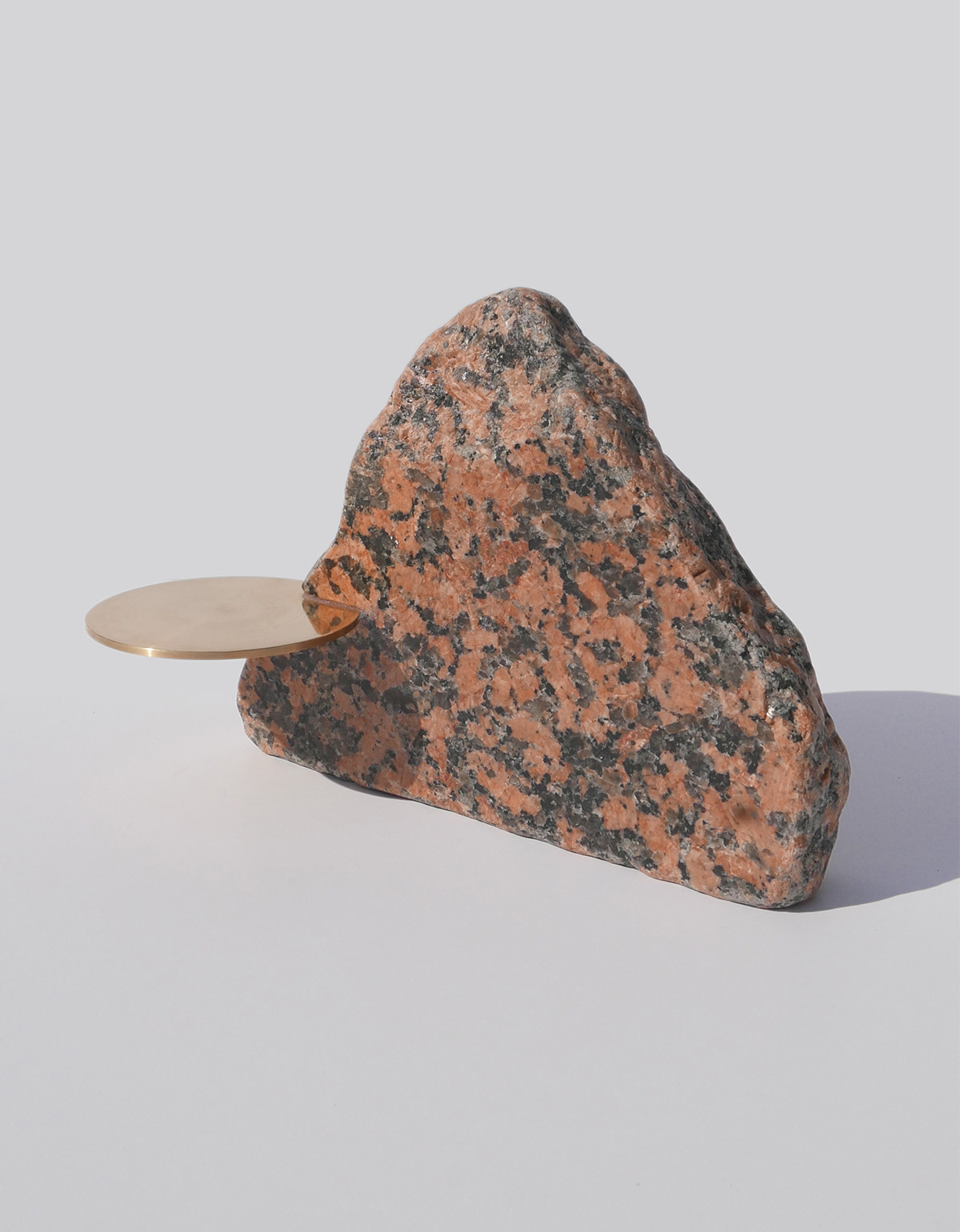
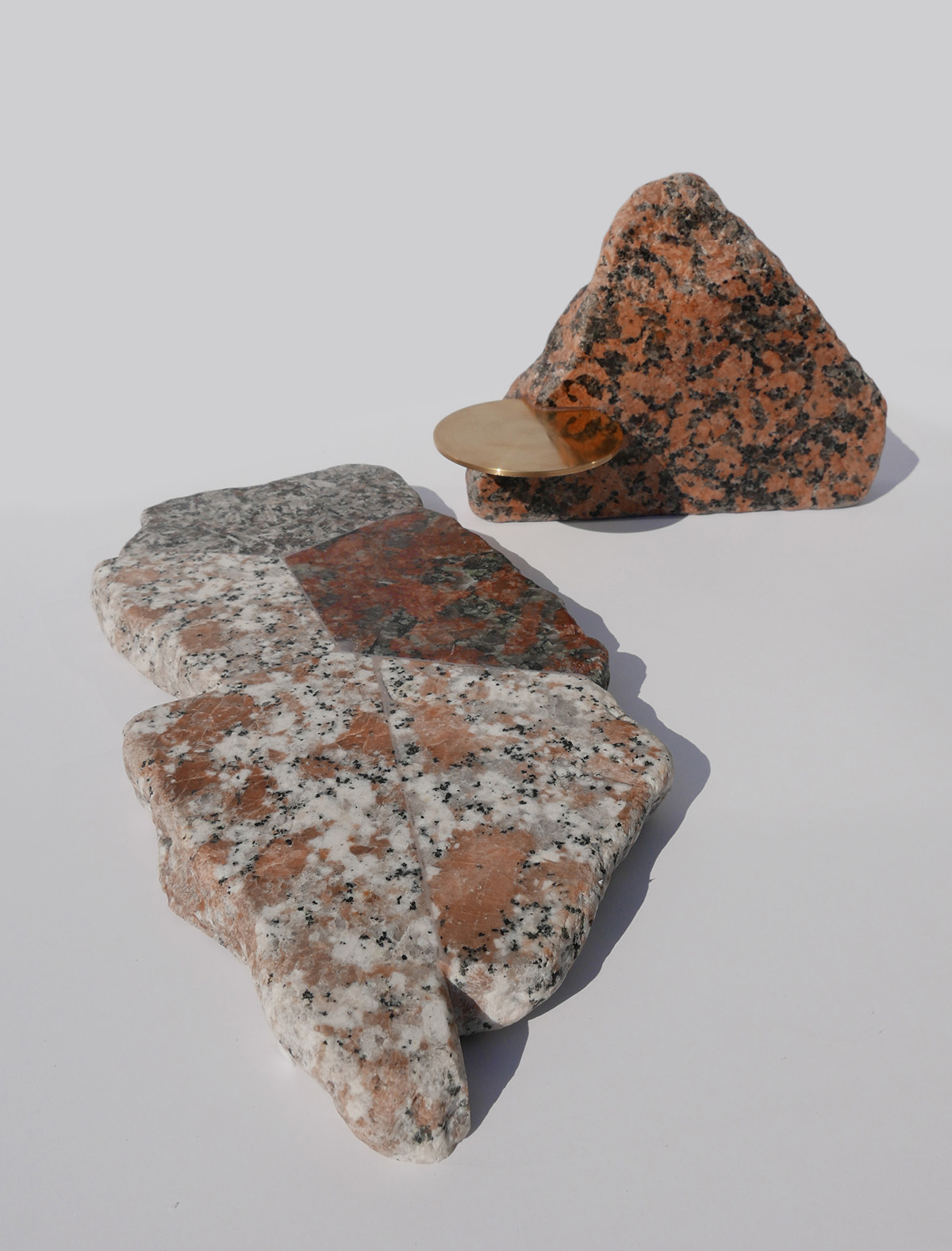
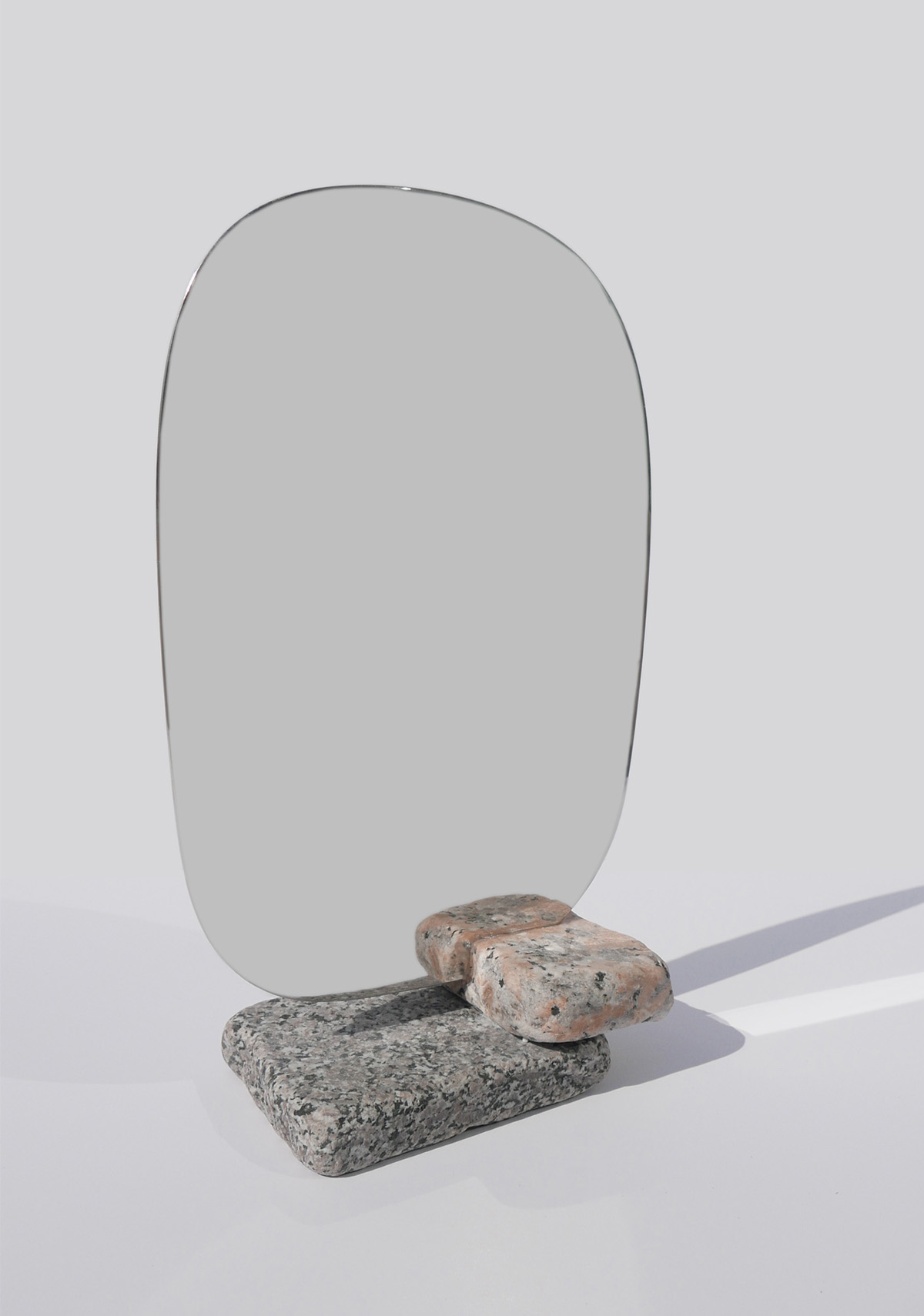
Marea Collage is an ongoing project from designer Anna Perugini, who found these fragments of semi-finished stone on the beach in her native Italy. “During winter, slabs of granite, marble, and terrazzo emerge on the abandoned shore of the Adriatic, returned by the tide and rinsed from the cyclic chaos of summer,” Perugini writes. Perugini is currently based between London and Eindhoven, where she is studying under the tutelage of Formafantasma.
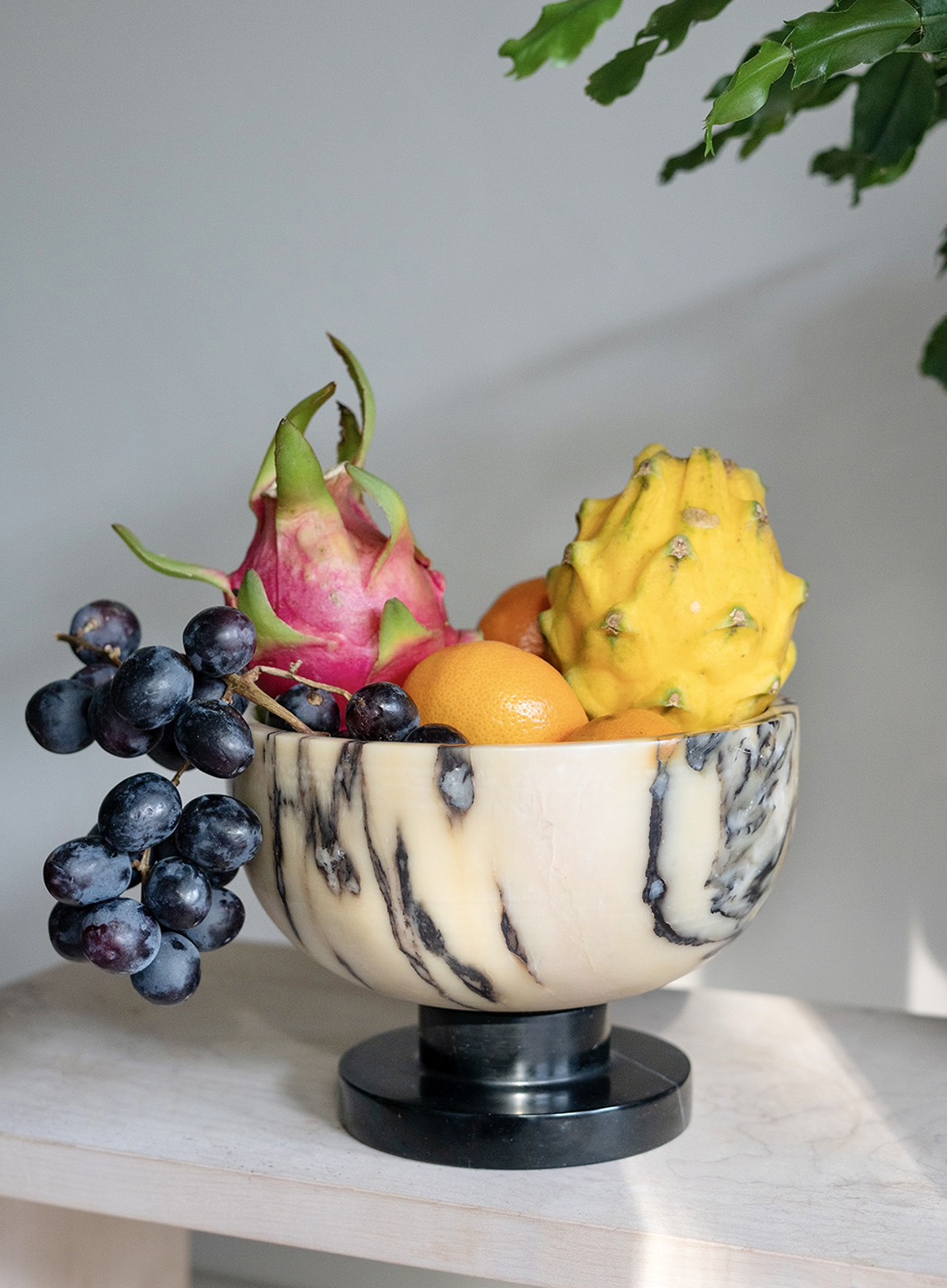
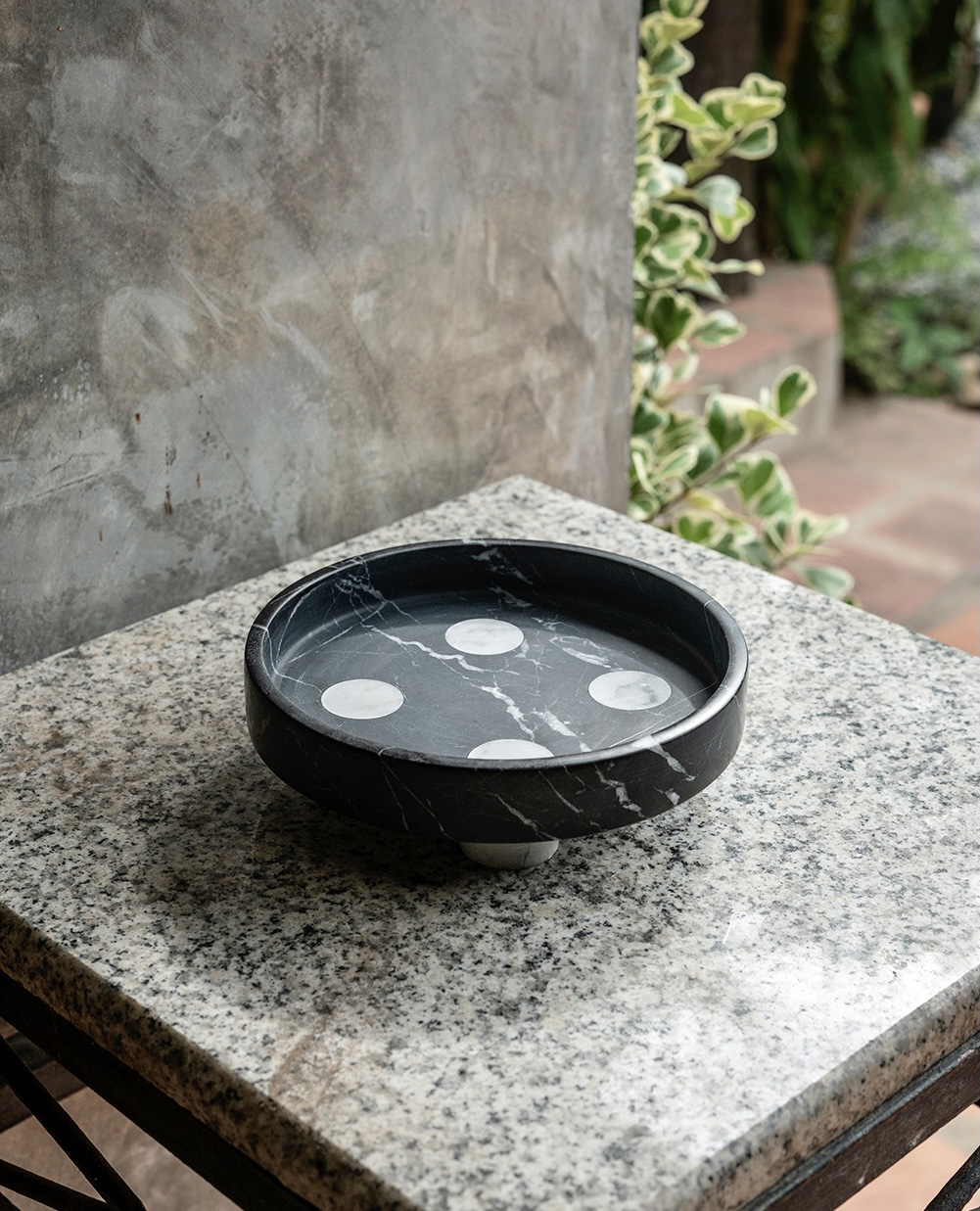
Late last year, just after guest editing a week of content on this very site, Thai-American designer Robert Sukrachand became a Thai citizen and soon set off for several months of traveling around Thailand and collaborating with artisans around the country. He’s slowly rolling out the results of that trip — and has plans to return often — but this particular collaboration with designer Steven Bukowski, created by marble artisans in the Saraburi province, caught our eye. Love.
Kingston School of Art
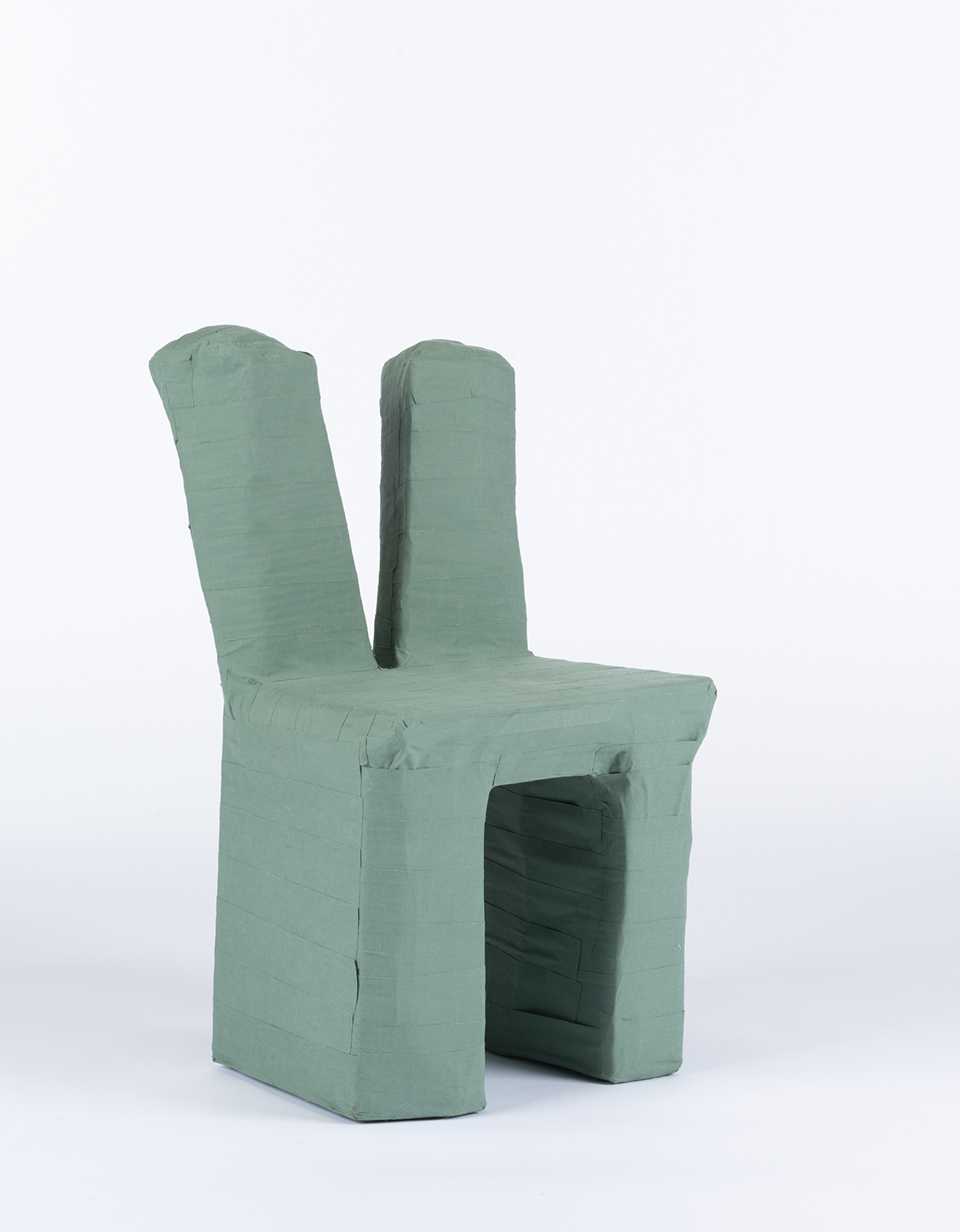
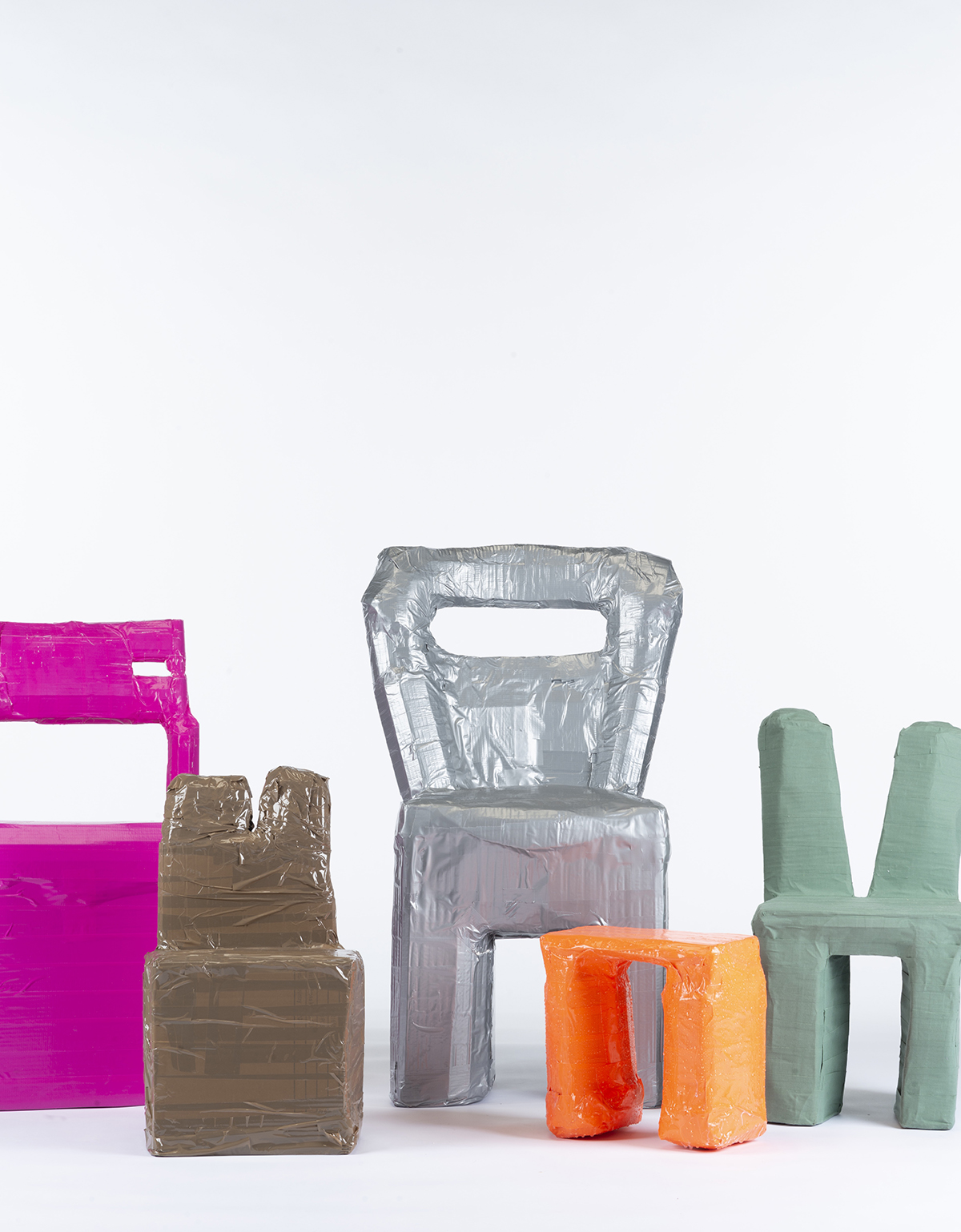
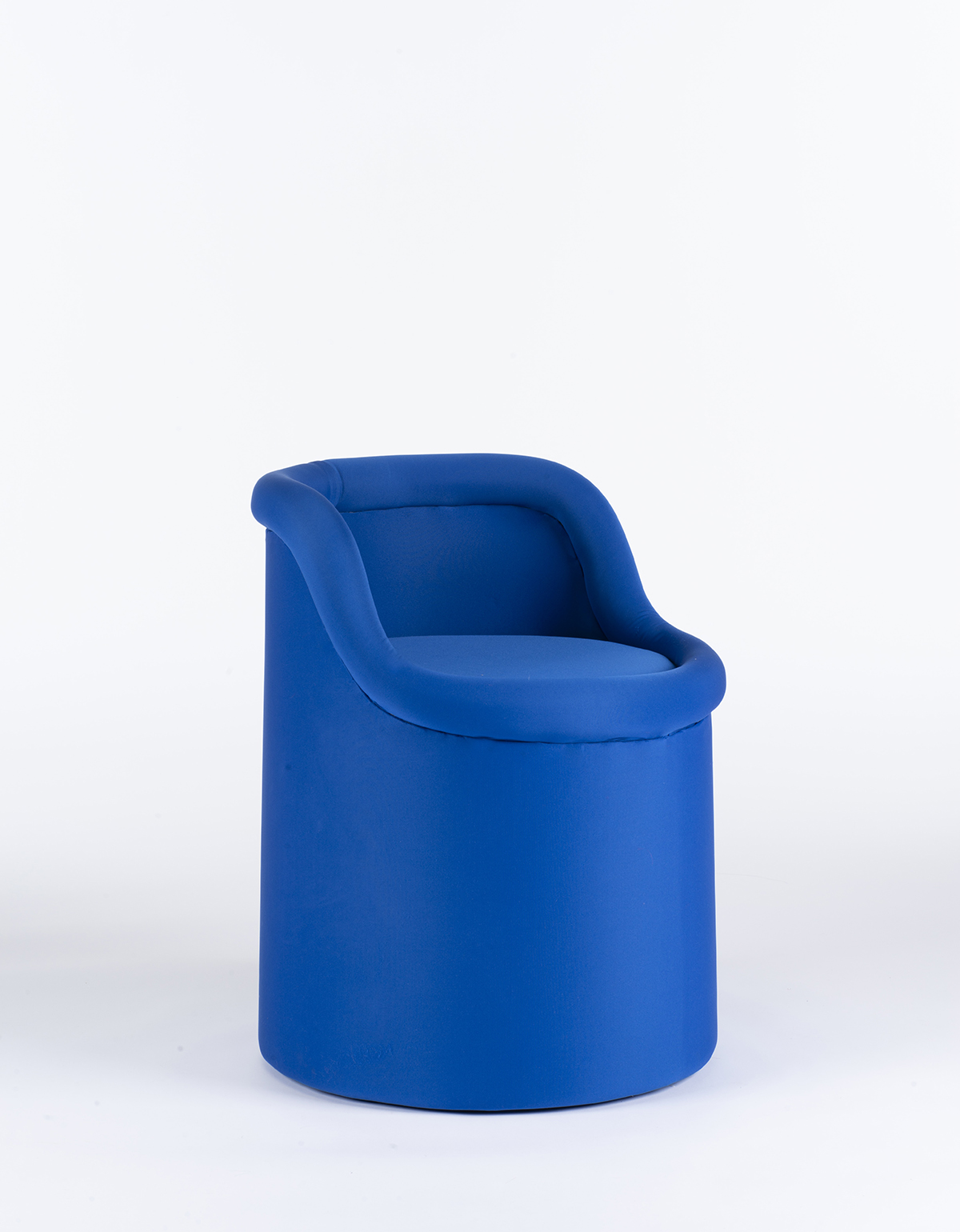

Abby Ghent, a graduate in the furniture design program at Kingston School of Art, submitted two different projects. The first, The Hands Playground, was developed during lockdown and examines the value of improvisation with chairs made from found structures, expanding foam, cardboard and tape. “The project started with no planning or designing, the idea was to keep my hands busy, and build my confidence in creating at a time of restriction. The traces and marks from the production have been left visible on the surface of the objects. Speed and the default character of each material shaped the language of the models.” Ghent’s other project, the Grab chair, also examines how we interact with objects but this time from the point of view of the user rather than the designer. An upholstered pipe detail around the edge indicates how the chair can be picked up and moved around the house.
Beckmans College of Design
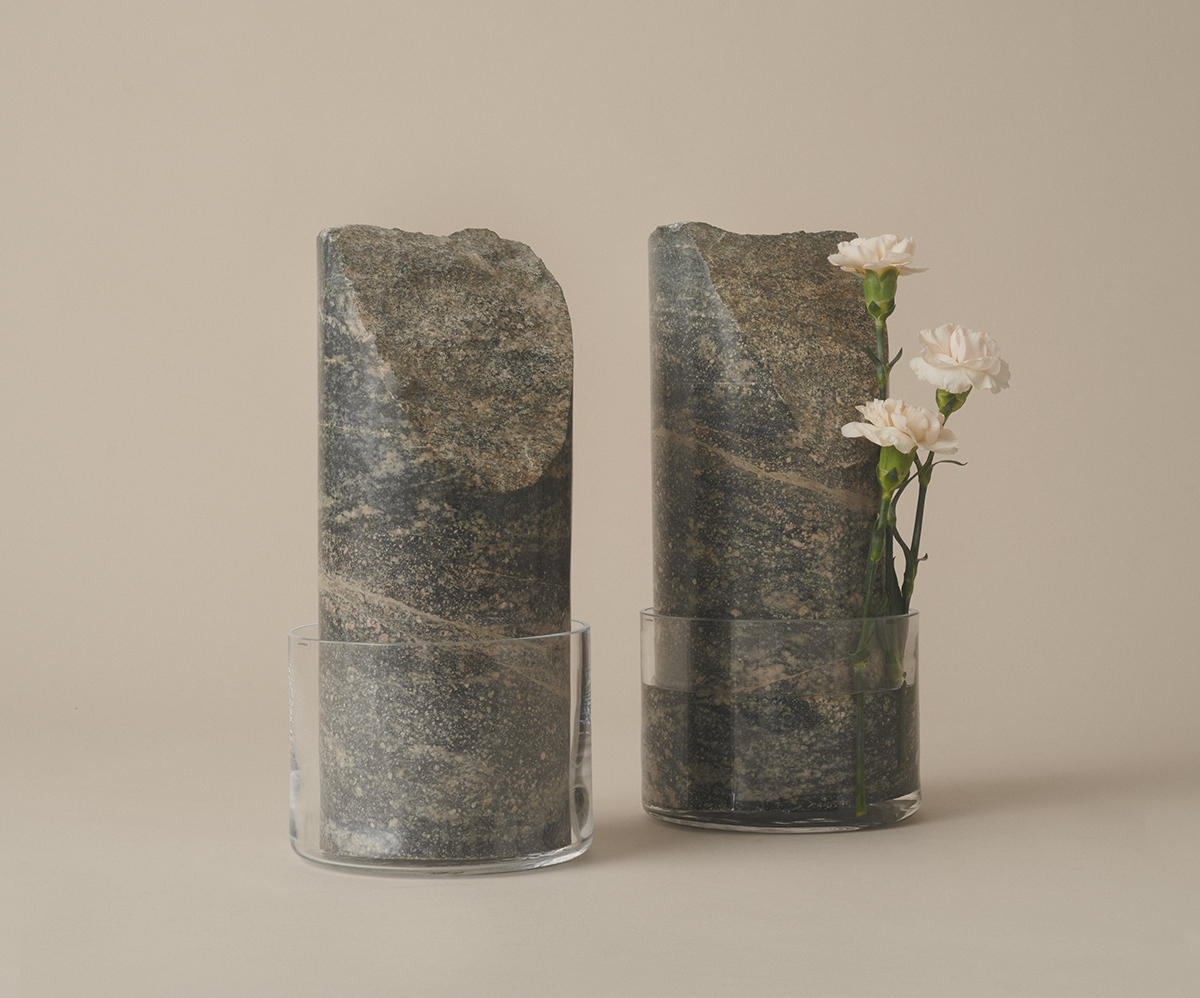
Arpie Amirians
“Taking critical design as a starting point I have designed a vase that is thought-provoking without it being instantly obvious. The intent is to avoid the vase being presented in a category of exclusive products that are out of reach for a broad range of people, and for it to be mass produced and presented in a commercial context. All the design choices of the vase, the heavy stone with the delicate glass, are meant to evoke questions about consumption and initiate discussion among the consumers.”

Elsa Frisén
“Reflect – Reshape is about our experience of light and its capacity for change. Light is an individual experience which means that everyone perceives light on a personal level and that it gives rise to people’s own personal associations. The light source illuminates the reflective surface which allows reflections to expand in different directions and to alter the room through indirect light.”
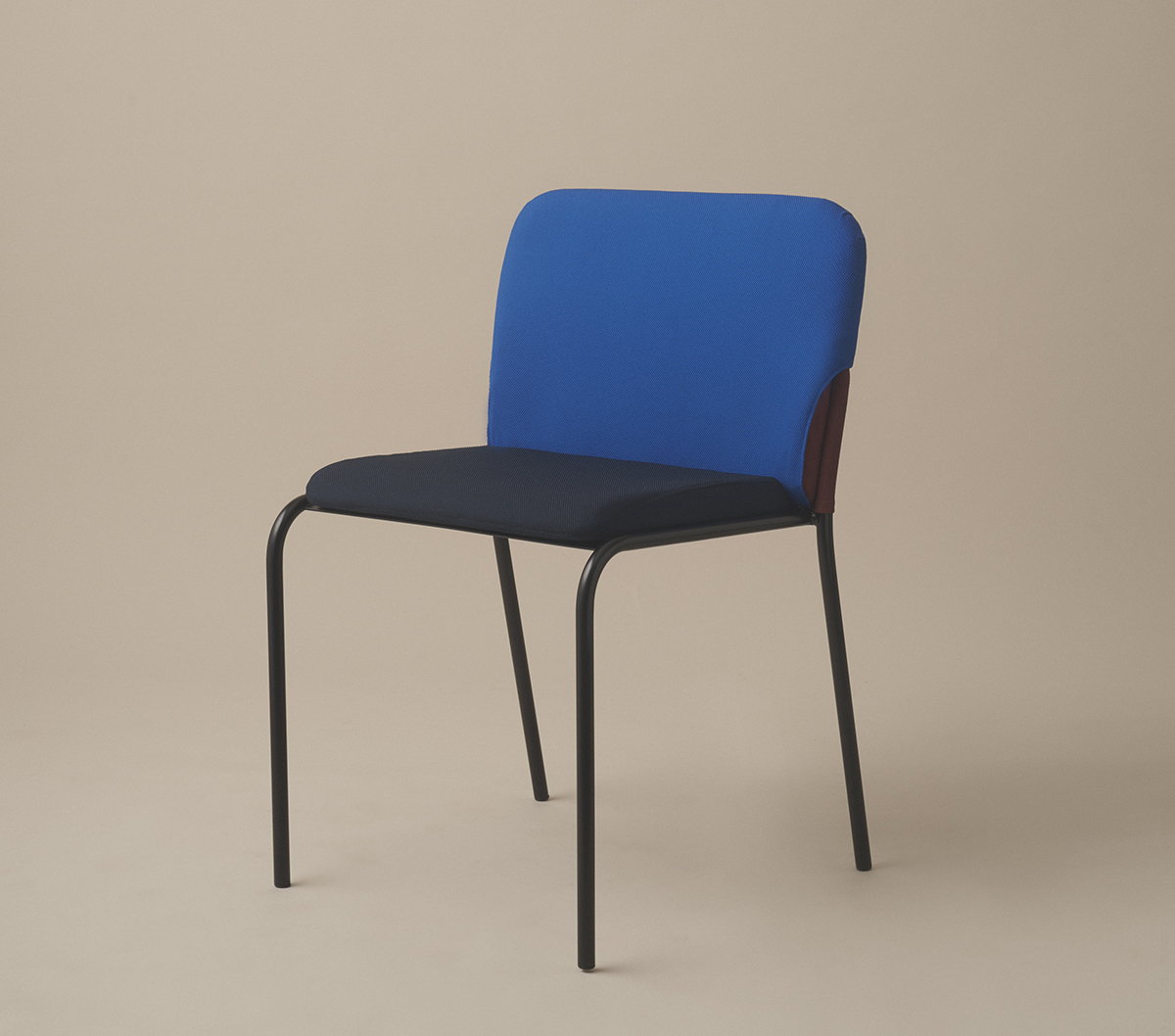
Emma Falkehed
“Assemble was created in collaboration with Skandiform for a life-cycle scenario in which the company leases its furniture on a continuing basis, refurbishing and exchanging parts when worn out. In this context I have examined how a chair’s usage can be extended in public space. The chair, or parts of it, can be returned to Skandiform to be repaired and possibly used in another context. A challenge has been to design the construction of the chair in a series of parts, to avoid the use of glue in the manufacturing process, and to be able to reclaim all of the components.”
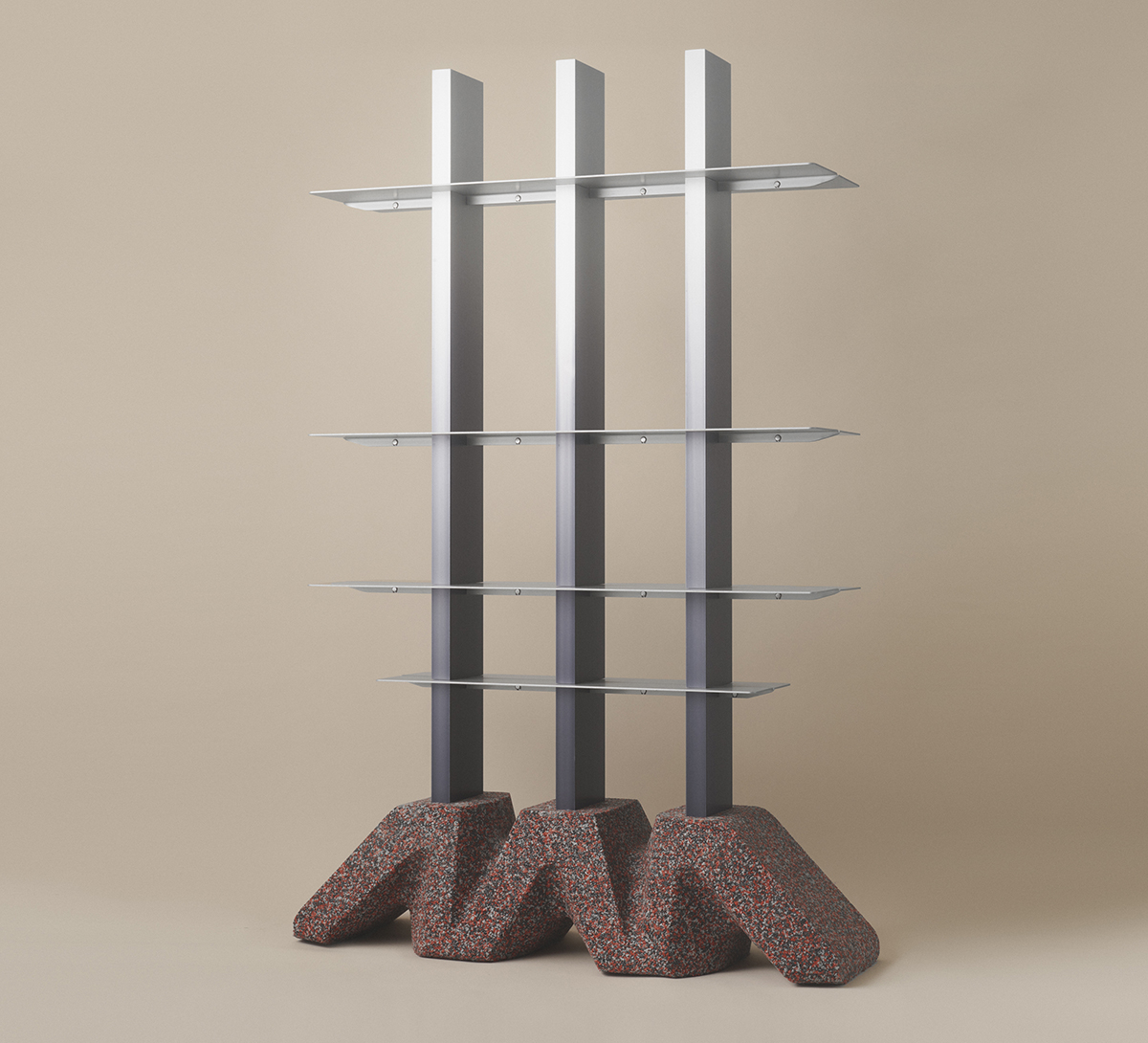
Gustav Winsth
“The DIO shelf is the result of an exploration of sneaker aesthetics with regard to shapes, materials, and the underlying subcultures that make its foundation. DIO imitates the trend of adding a share of granulated waste material when casting the sole of the sneaker. By examining the recycled rubber granulate as the principal material when casting complex geometries and exposing the raw waste, value is created in a climate-smart aesthetic which builds identity.”

Johanna Fosselius
“Once upon a time there was a business strategy called “mönsterritningar”. Furniture drawings that were ordered and taken to a local cabinetmaker who made it for you – if you did not want to build it yourself. local-source.furniture is a furniture concept inspired by “mönsterritningar” and open source. With the project I have sought to emphasize the time required for creating furniture, from designing to manufacturing, and inspire to build yourself or buy locally.”
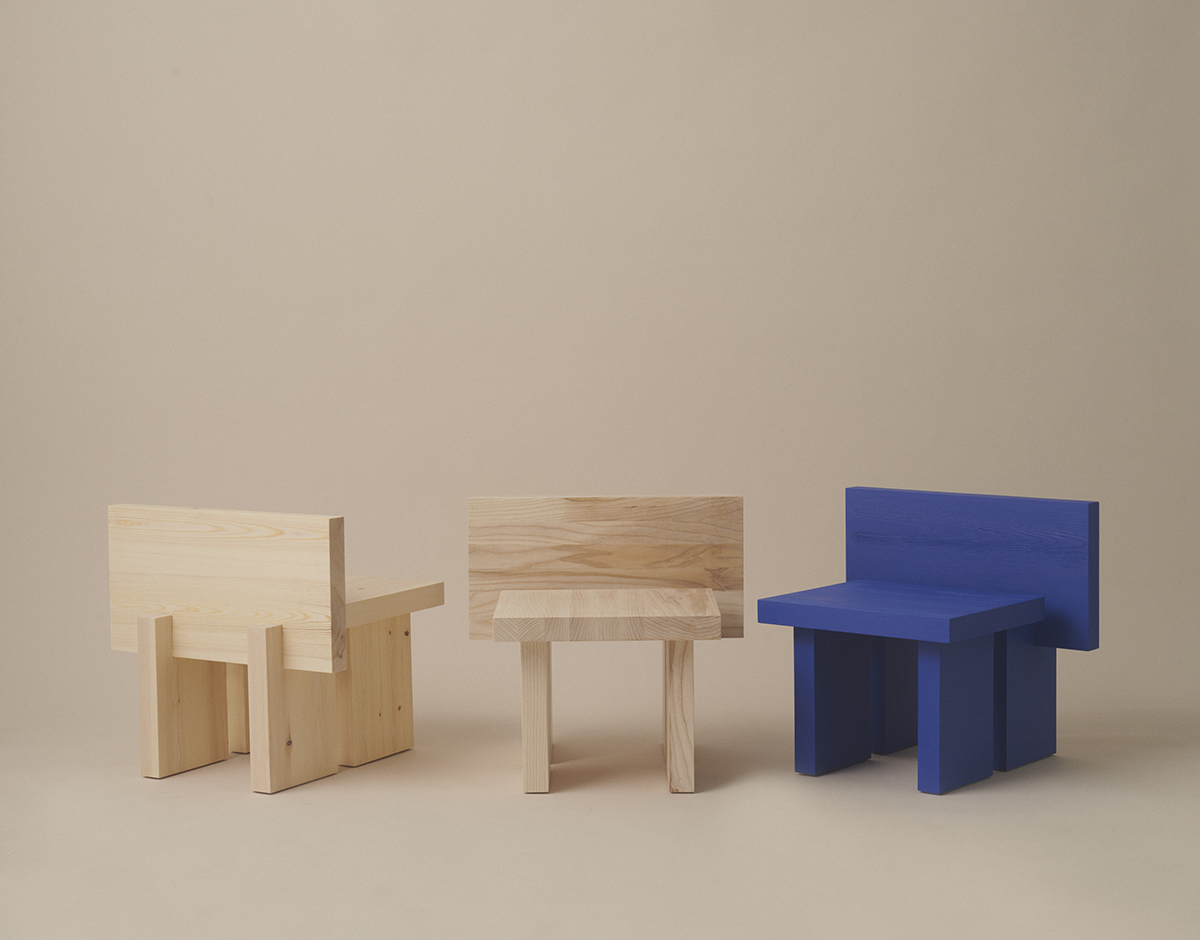
Matilda Olsson Borg
“How do we perceive a piece of furniture with different dimensions and proportions than the ones we are used to relating to? With Peggy I want to invite people to experience a new perspective by playing with the scale of the furniture. A tree stump and a rock in the woods, or a pillow on the floor, are objects that have made me think about the various sitting heights that we encounter in life, as well as where and how we sit. Based on another way of sitting, I have explored how I can design a chair that captures the borderland between child and adult, small and large, neat and clumsy.”
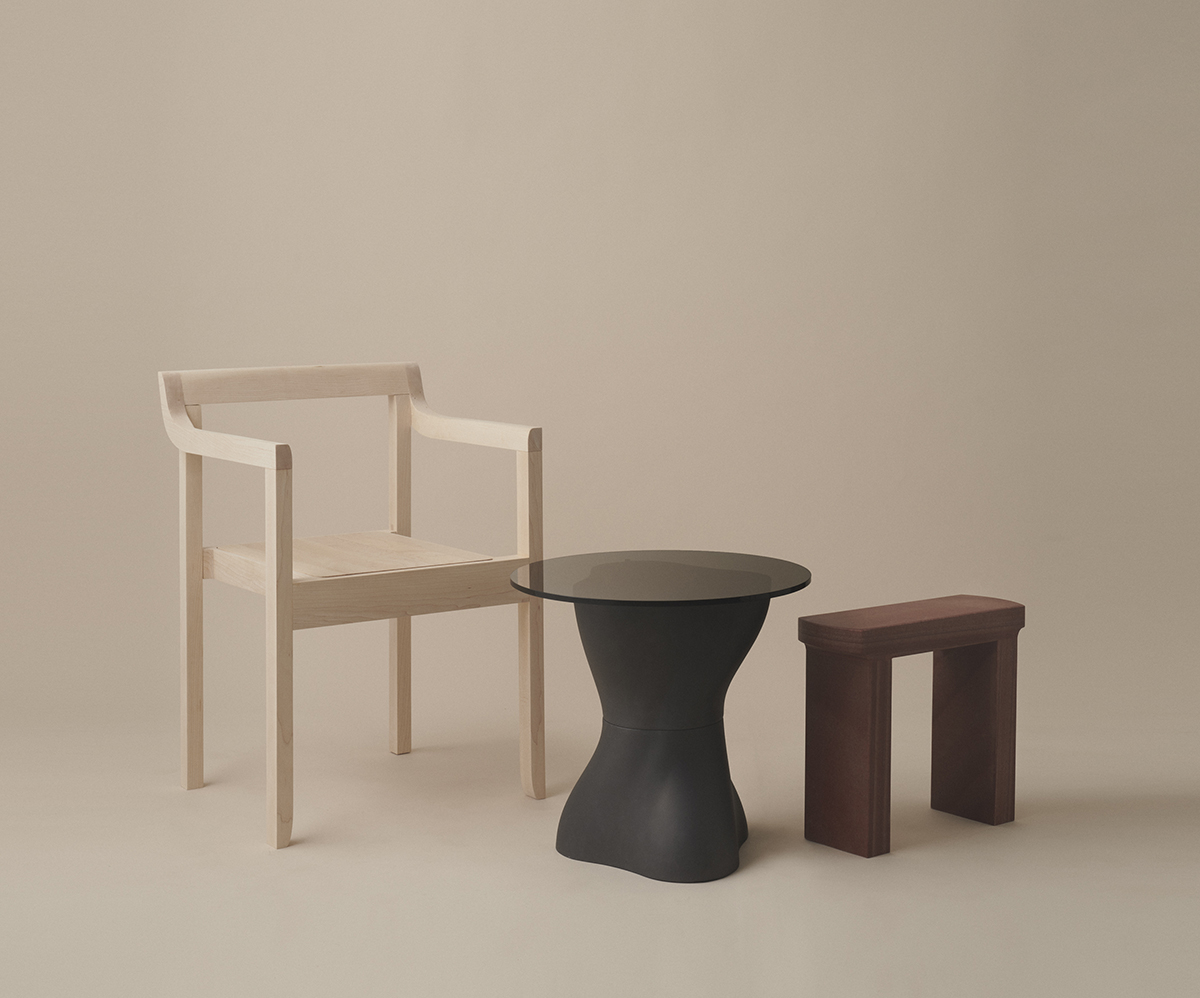
Max Stjerna
“Modern environments are sometimes associated with an inhospitable, foreign, uneasy sensation. With the hope of countering this alienation, supported by the increasing digitalization and consumerism of society, I have set out from three contexts: pause, contemplation and visit, with the aim to recall sensuous qualities found in memories and personal references linked to these. Material qualities and feelings from the memories have been applied to three items of furniture: a stool, a side table and an armchair for each context respectively.”
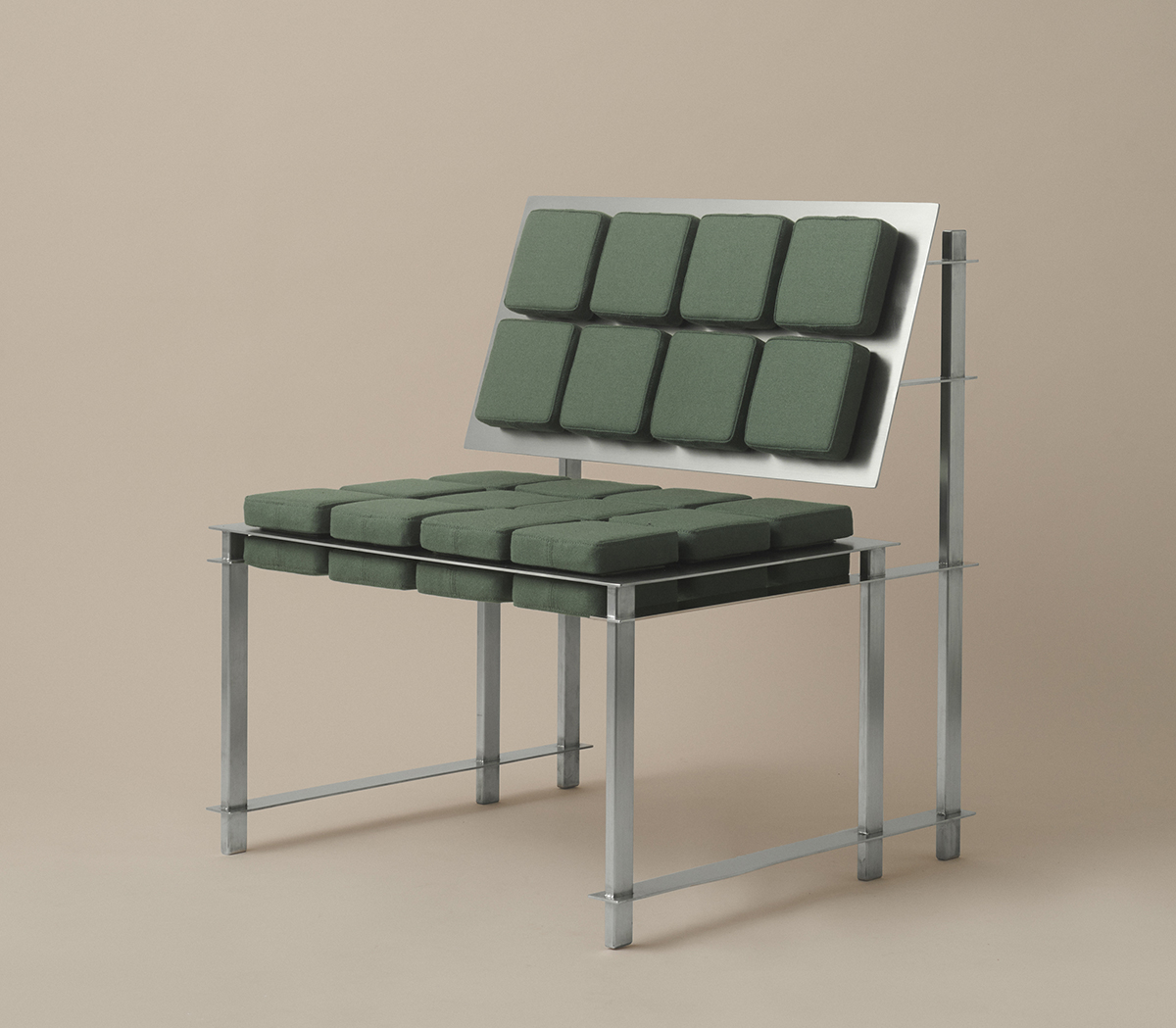
Teresa Lundmark
“In collaboration with three companies I have developed a design method that is adapted to production techniques in metal. The method relies on translating technique into shape. Custom Chair is specially designed for laser cutting in which all of the dimensions and proportions are adjusted to minimize the amount of waste material. In this project I wanted to explore what happens in a reshaped design process. Custom therefore started out as a study of the metal industry where I looked at various manufacturing techniques. I chose to make use of laser cutting, welding and bending which have economic and efficiency aspects in production.”
Royal College of Art
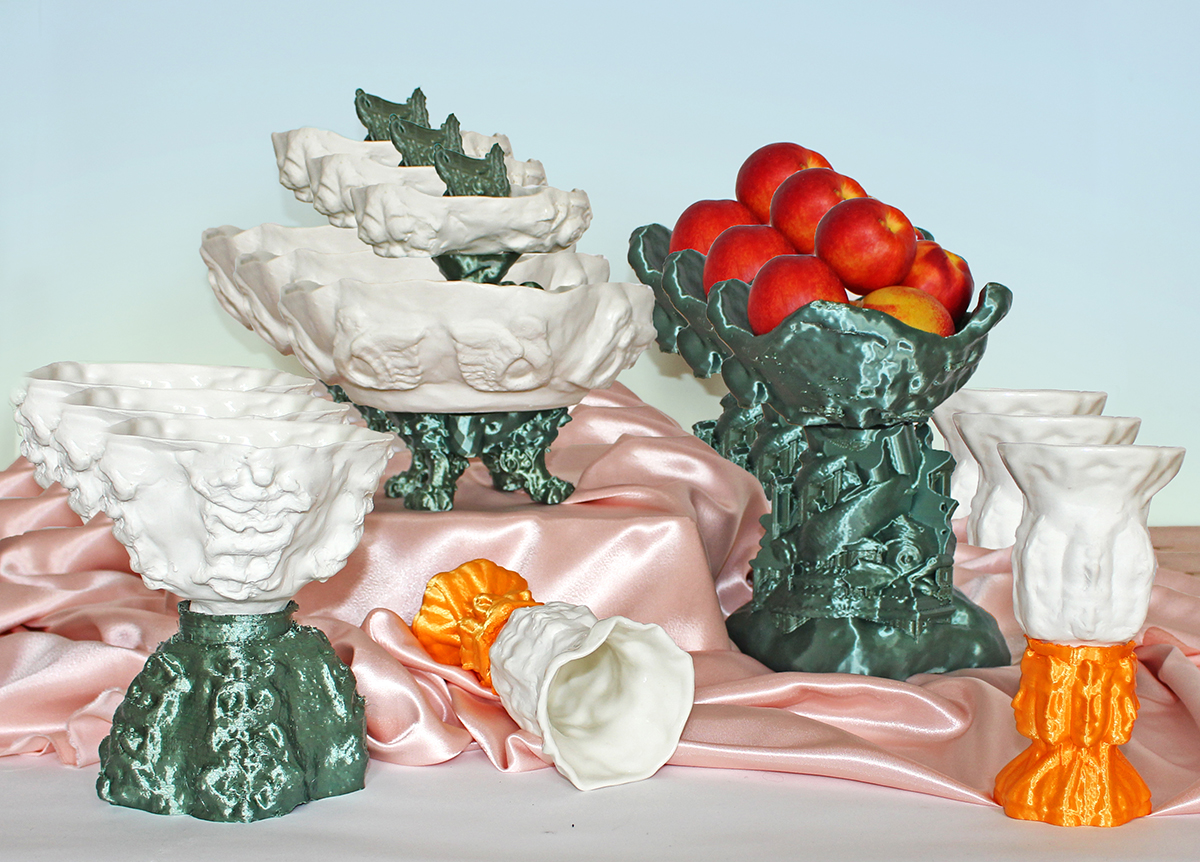
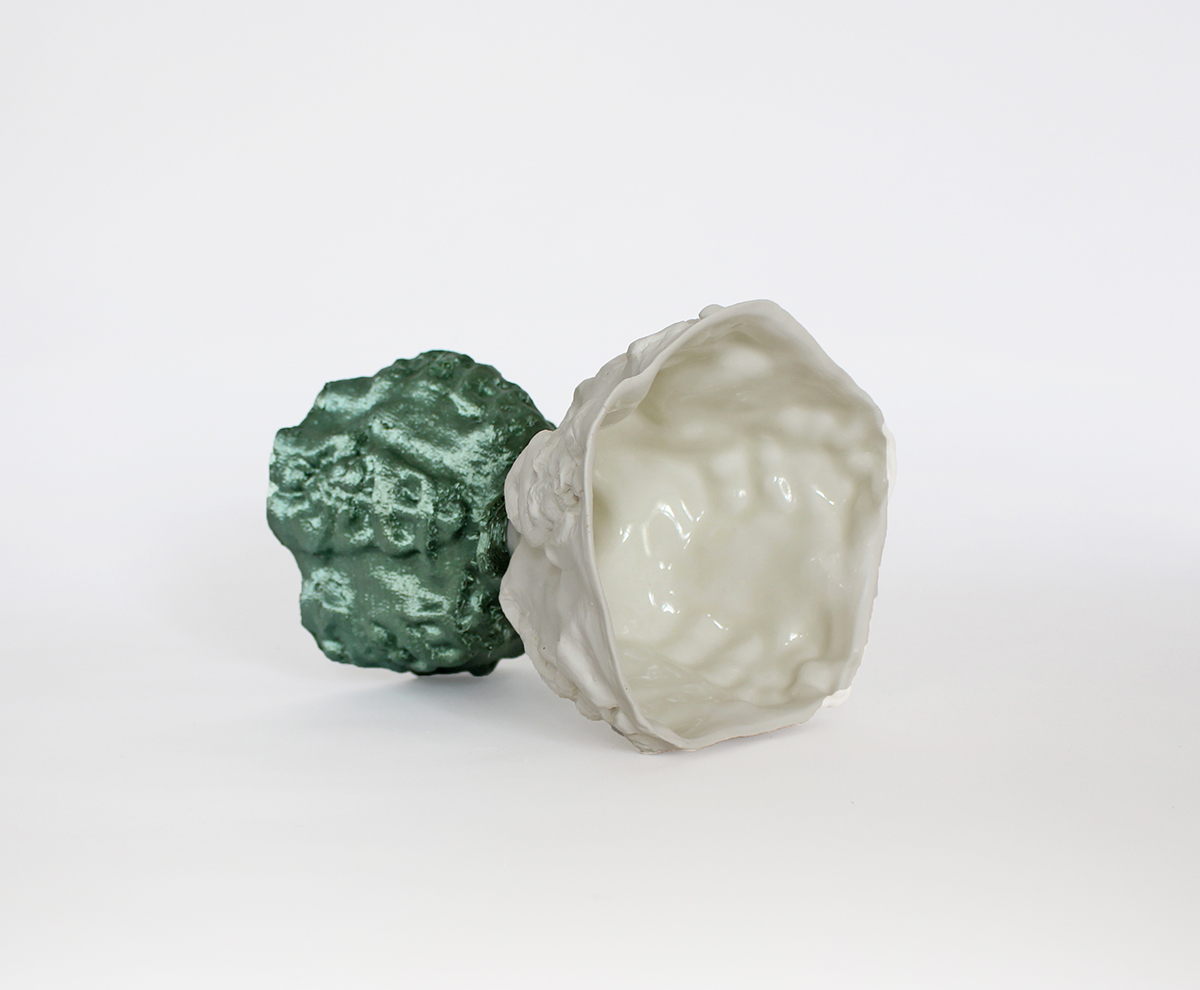
Natalia Triantafylli – Design Products
“Chimeras of a High Tide is a collection of artifacts combining hand-built stoneware, slipcast Parian porcelain and 3d printed elements. The objects are made by details of scanned Victorian street furniture around the city of London merged with scans of my own creations. Reflecting on my heritage as a Greek person as well as my experience as a designer/maker, I am intrigued by the paradox of the Victoriana, where the latest industrial means of production are expressed through revivalism.”
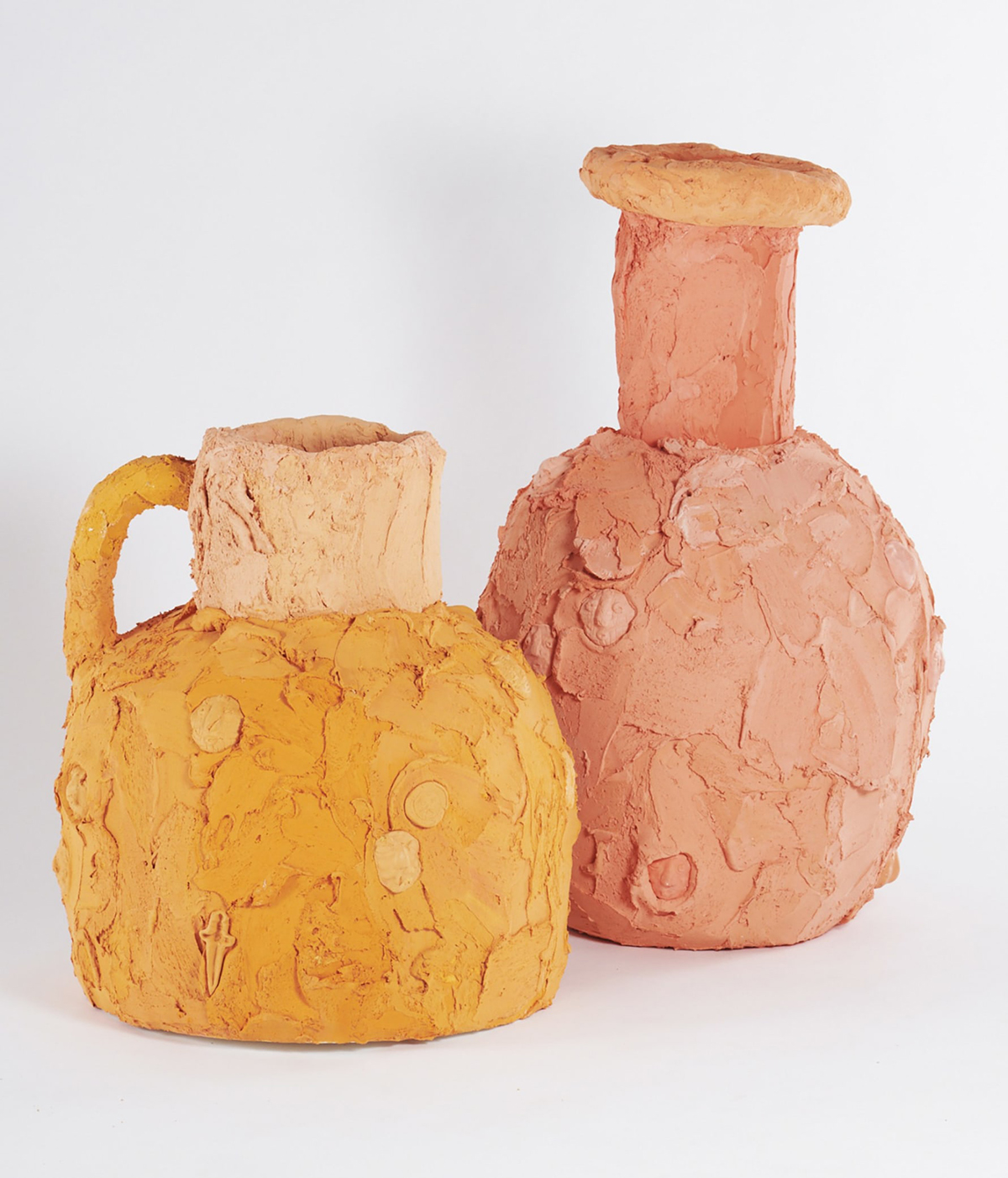
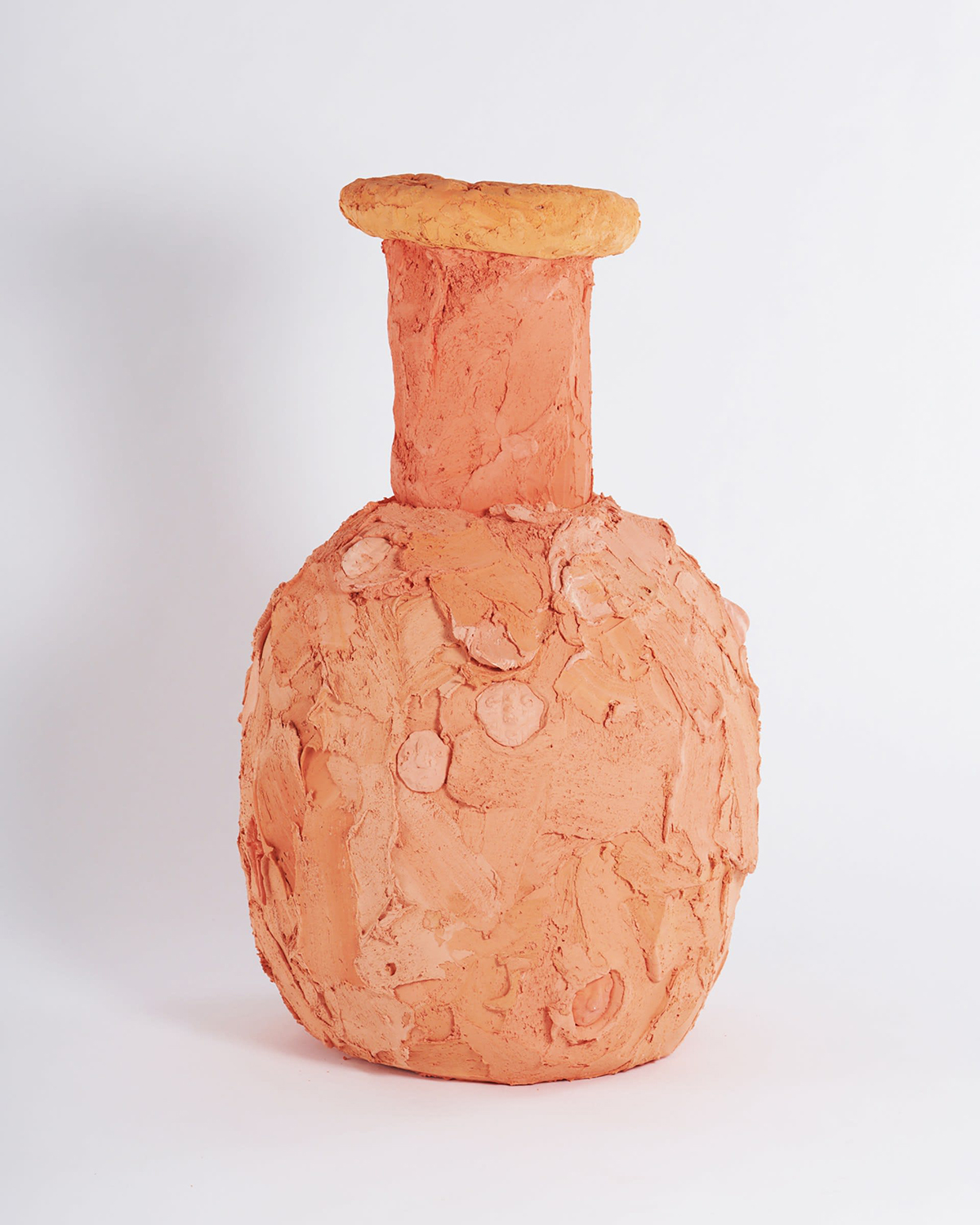
Camilla Bliss – Sculpture
“These works follow an unguided movement where there is an allegiance to ritual and reverence through transitory states of the mind. Each mark made to create the work becomes a memory of the dance performed. The work has a relation to body, breath and the imagination; exploring how sentimentality and spirituality can be imbued in objects through the significance of ruptured time; moments where we move in an out of consciousness.”
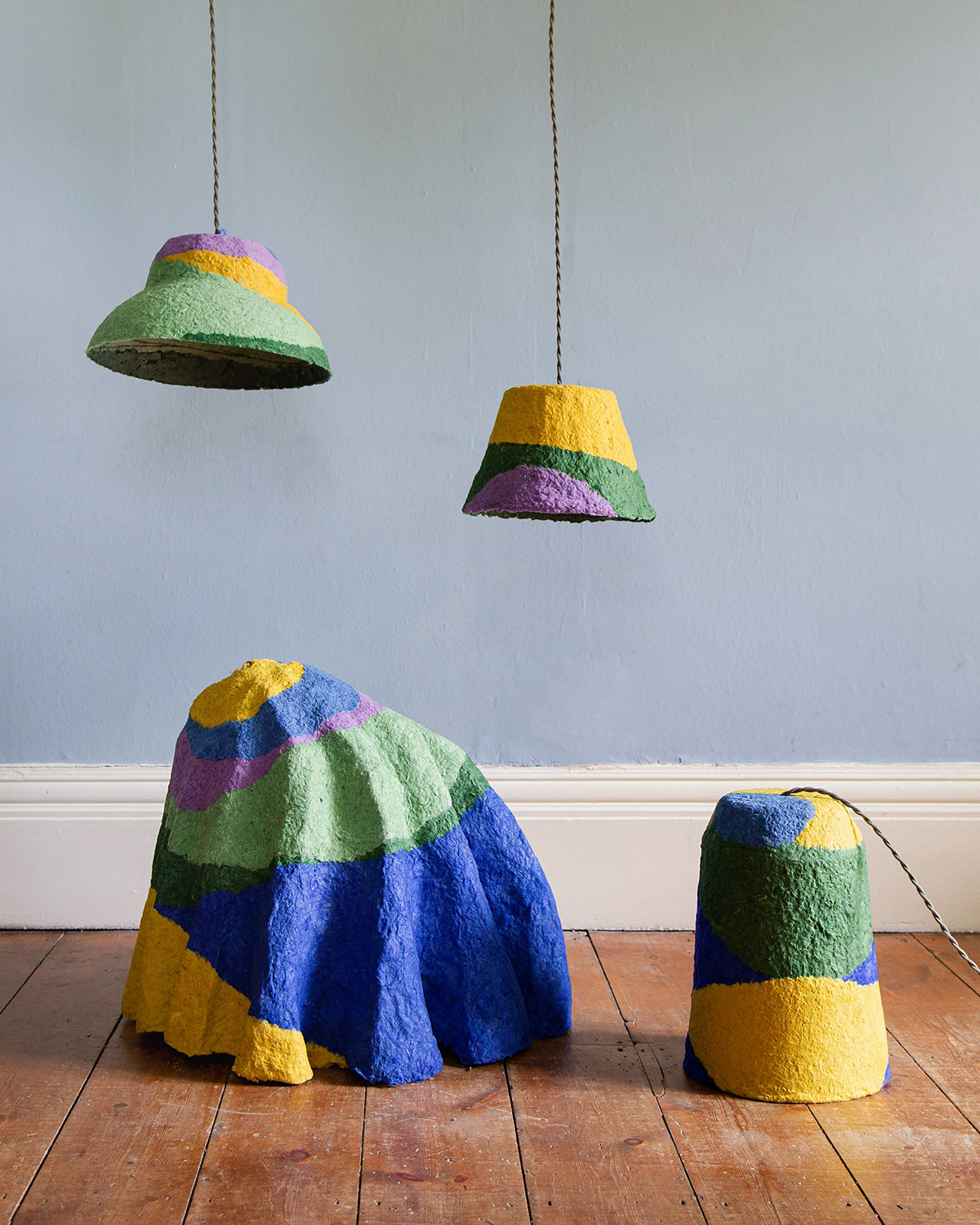
Ellie Carr Smith – Textiles
“Carr Smith utilizes the fiber byproduct produced from her hand tufting process to create 3D forms which exploit color and tactile surface qualities. Collecting and sorting the excess fiber and combining these with potato starch, she has developed an experimental biomaterial 3D production technique.”
RISD
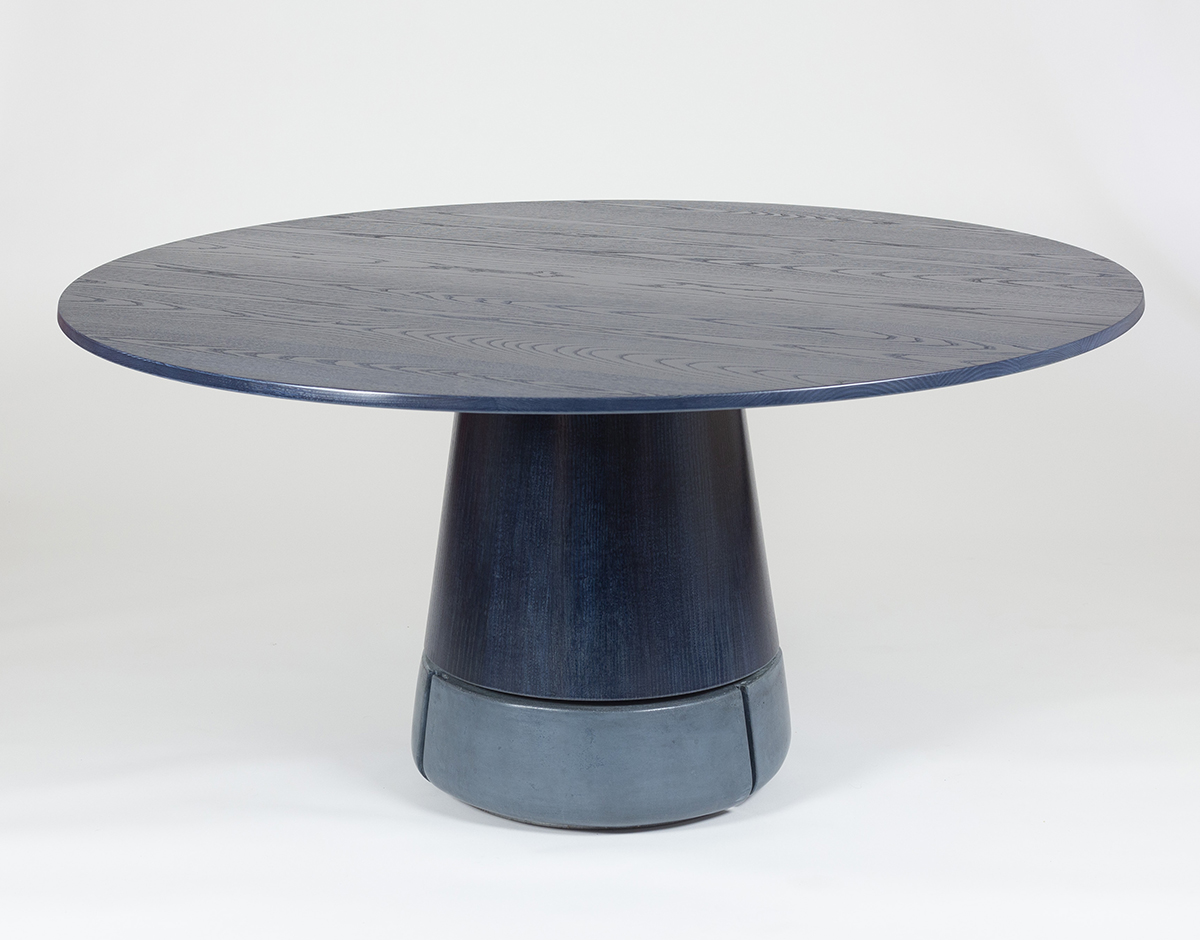
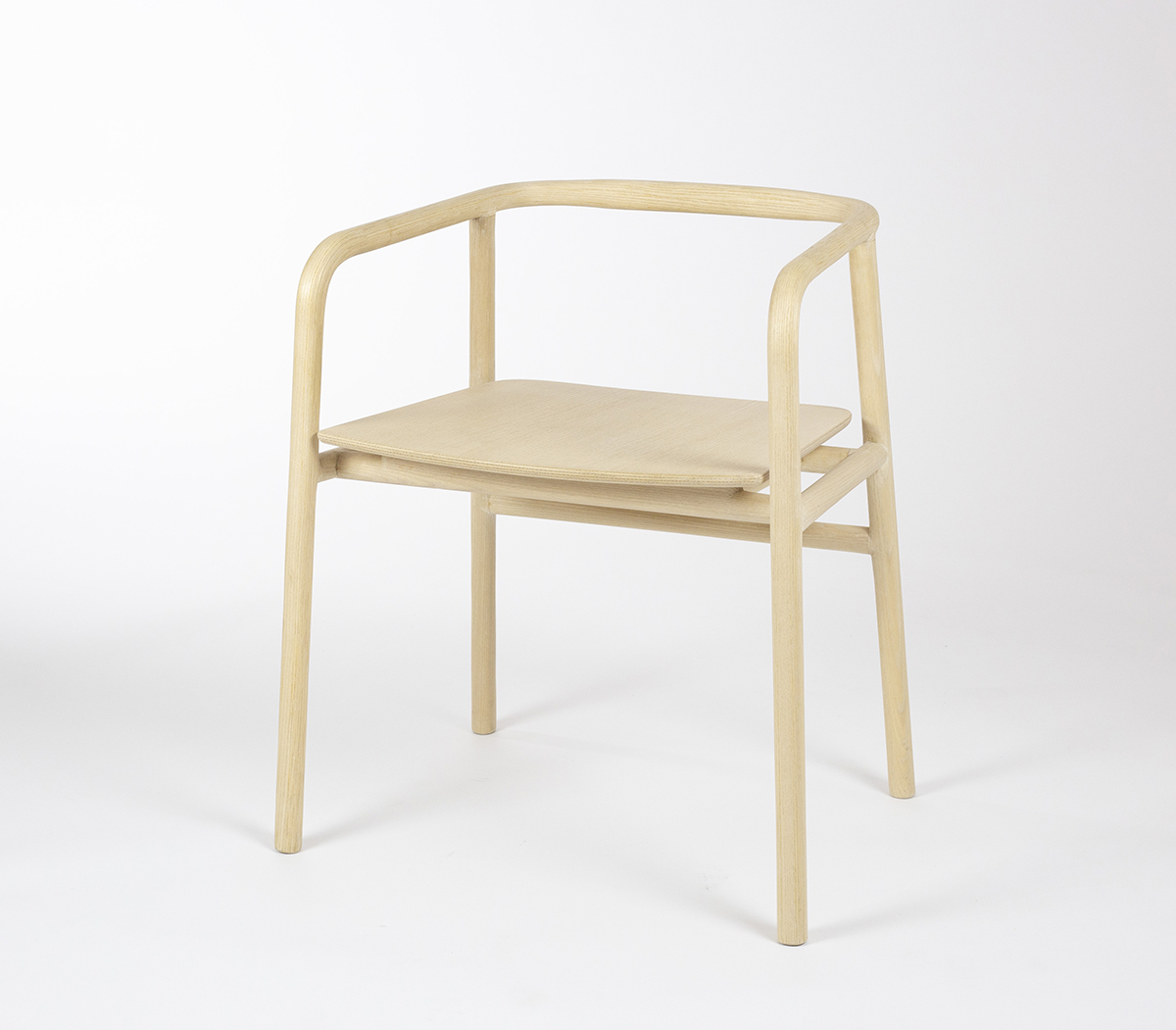
Eric Loucks
“Making Meaning explores mental health through the lens of a contemporary craft-based design practice. Themes of identity, catharsis, connection, flow, teaching, and community create a framework for understanding the role craft plays in developing and maintaining a healthy mindset. The physical pieces that result from this approach are meticulously made, highly considered, and given the quality of contemporary heirloom: a piece that promotes a kind of emotional connection and wellness in their owner.”
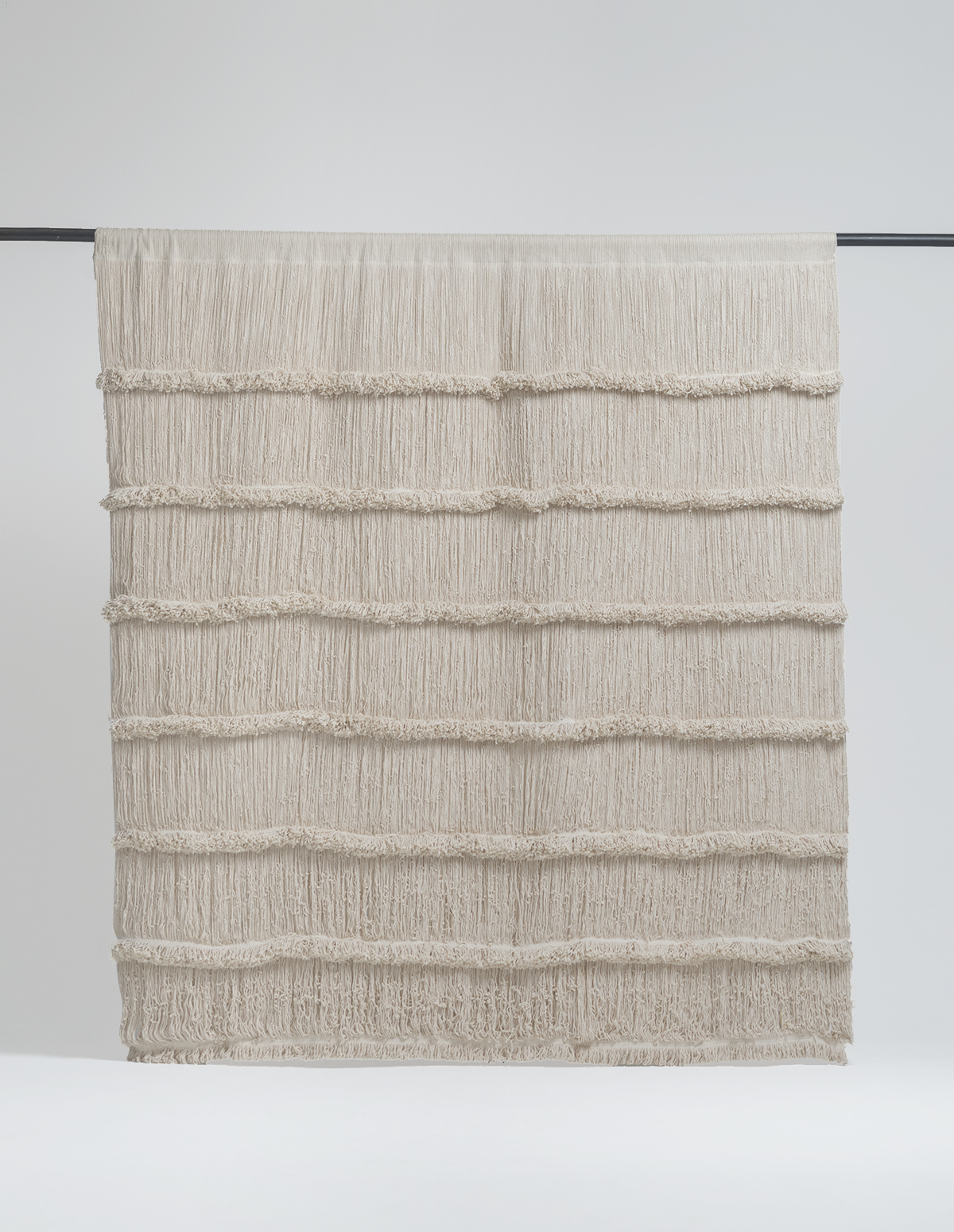
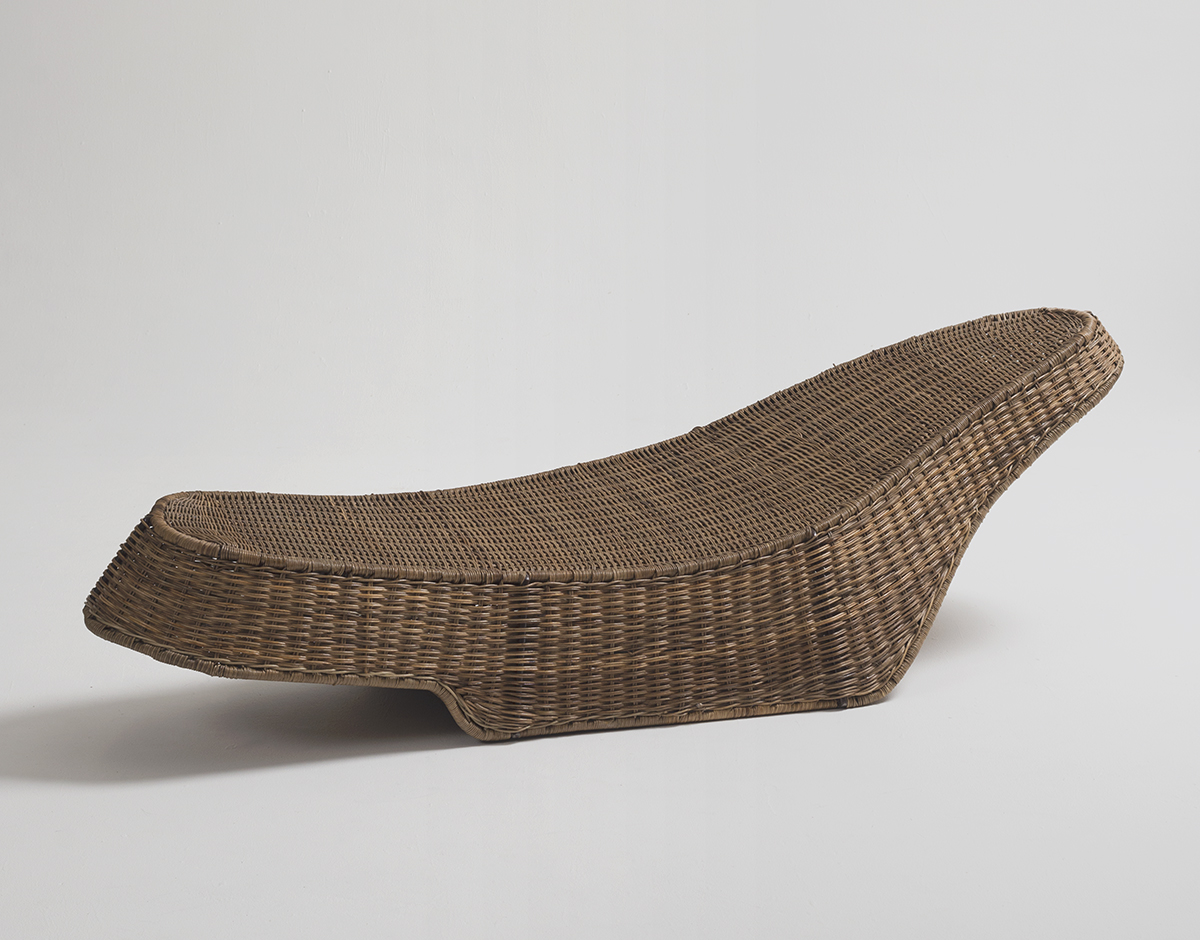
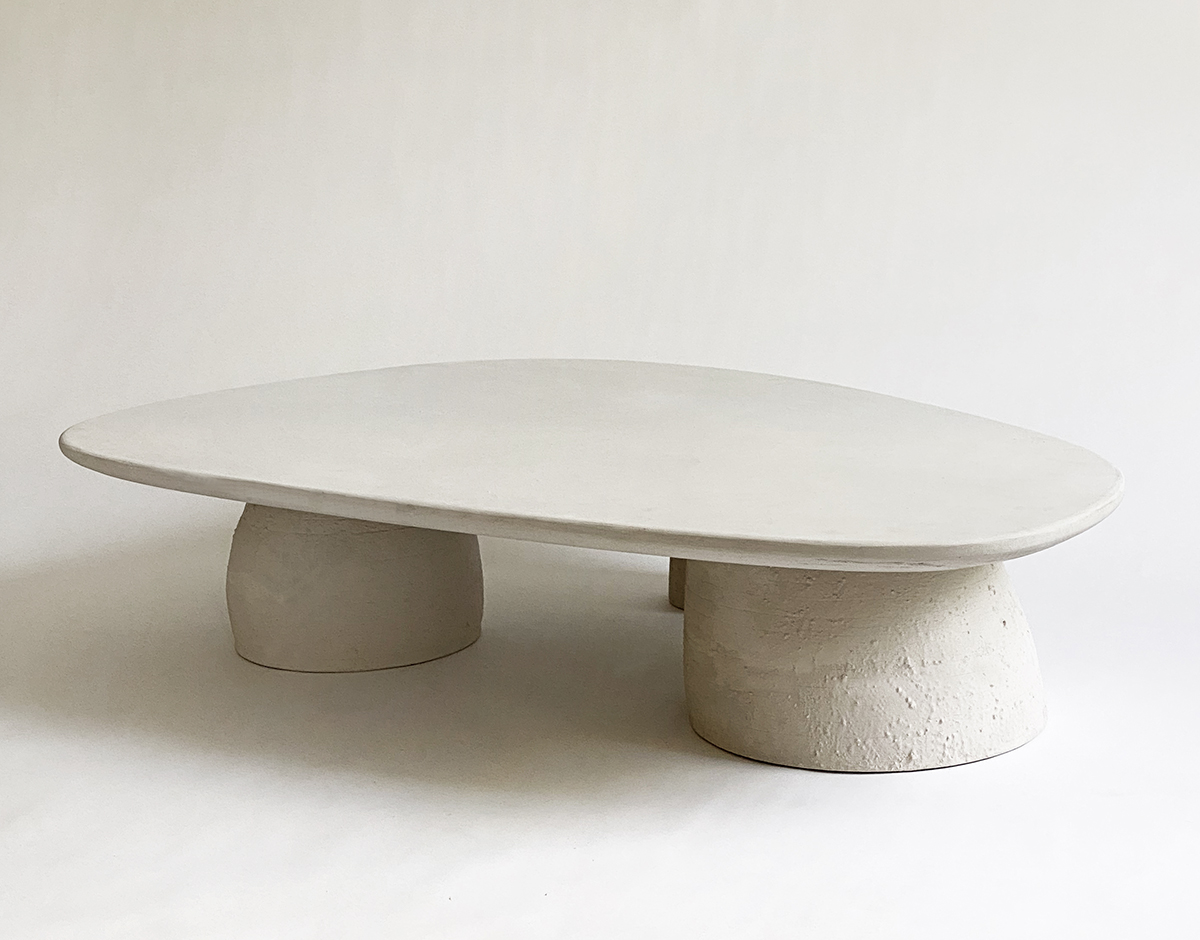
Estefania de Ros
“In this body of work, I’ve collaborated with four artisans from my home country, Guatemala: Apolonio Vicente, Vinicio Vicente, Mario Poz and Manuel Otsojay. They all use traditional craft methods with natural materials: wicker, wool, and cotton. I interweave, overlap, and knot mementos from my childhood with current ideas and dialogues that contain loose threads to the work. All of the layers merge in fluid forms with texture and movement. The curtains let light in, the rug sets warmth, and the “cayuco” invites you to slow down. I aim to push back against the devaluing of craft traditions, especially in a globalized market.”
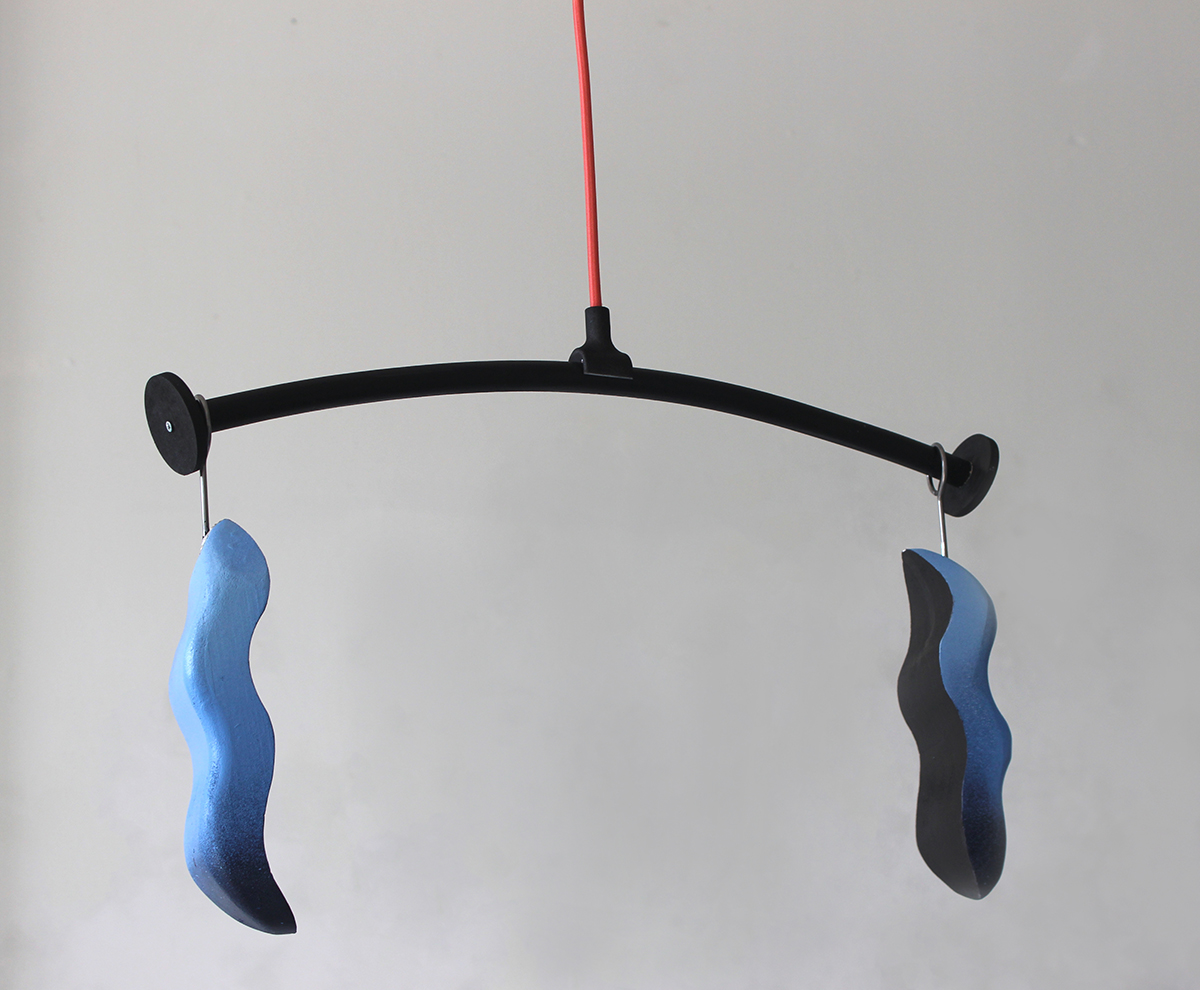
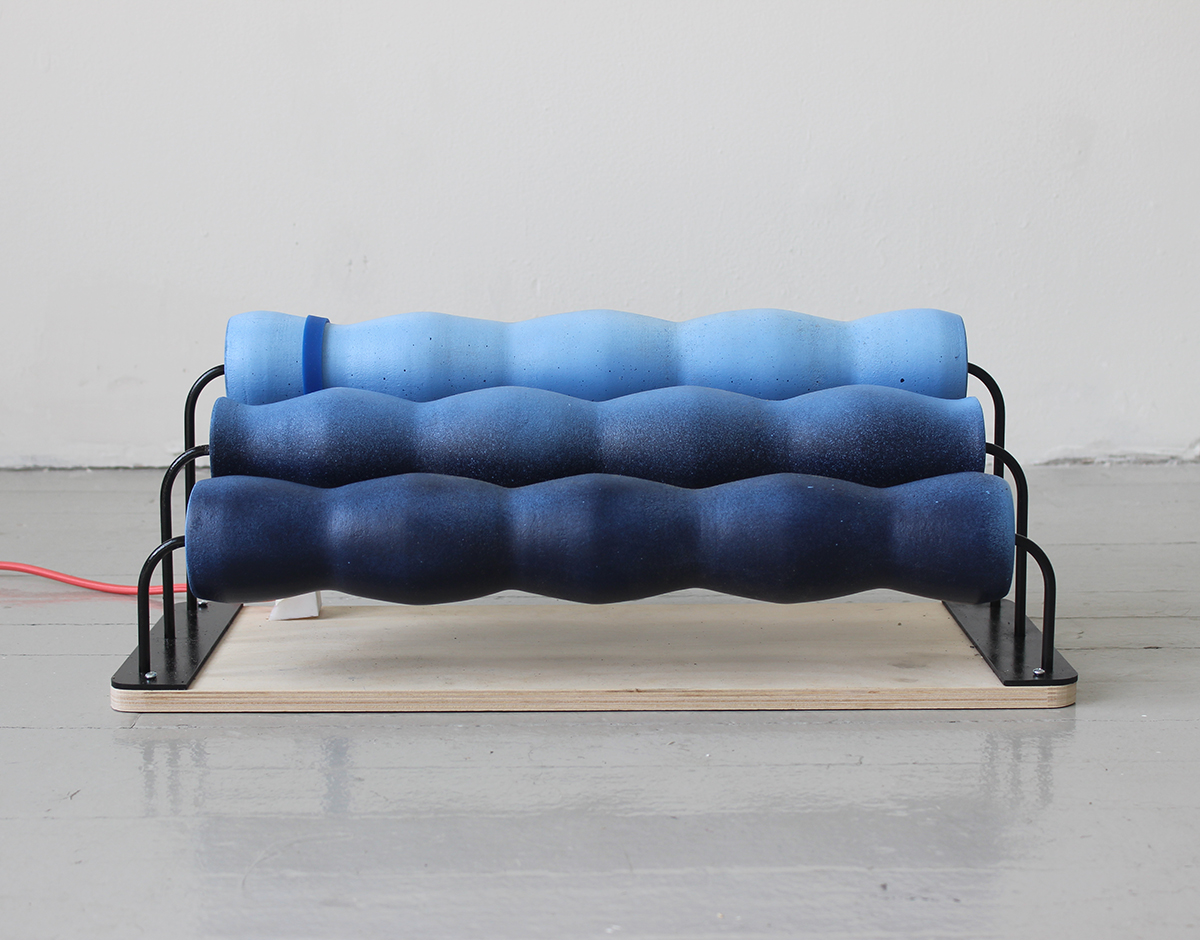

Jennifer Ziyuan Huang
“We work in front of computers and consume digital entertainment in our leisure time. The goal of my thesis is to design objects to encourage body movements and good body alignments throughout the day. I designed a chair that allows people to switch between kneeling and cross-legged positions, which are poses that both encourage better alignment and more body movements. For my second project for the thesis, I looked to the internet. I designed a movement-based internet browser that people need to use body movements to navigate.”
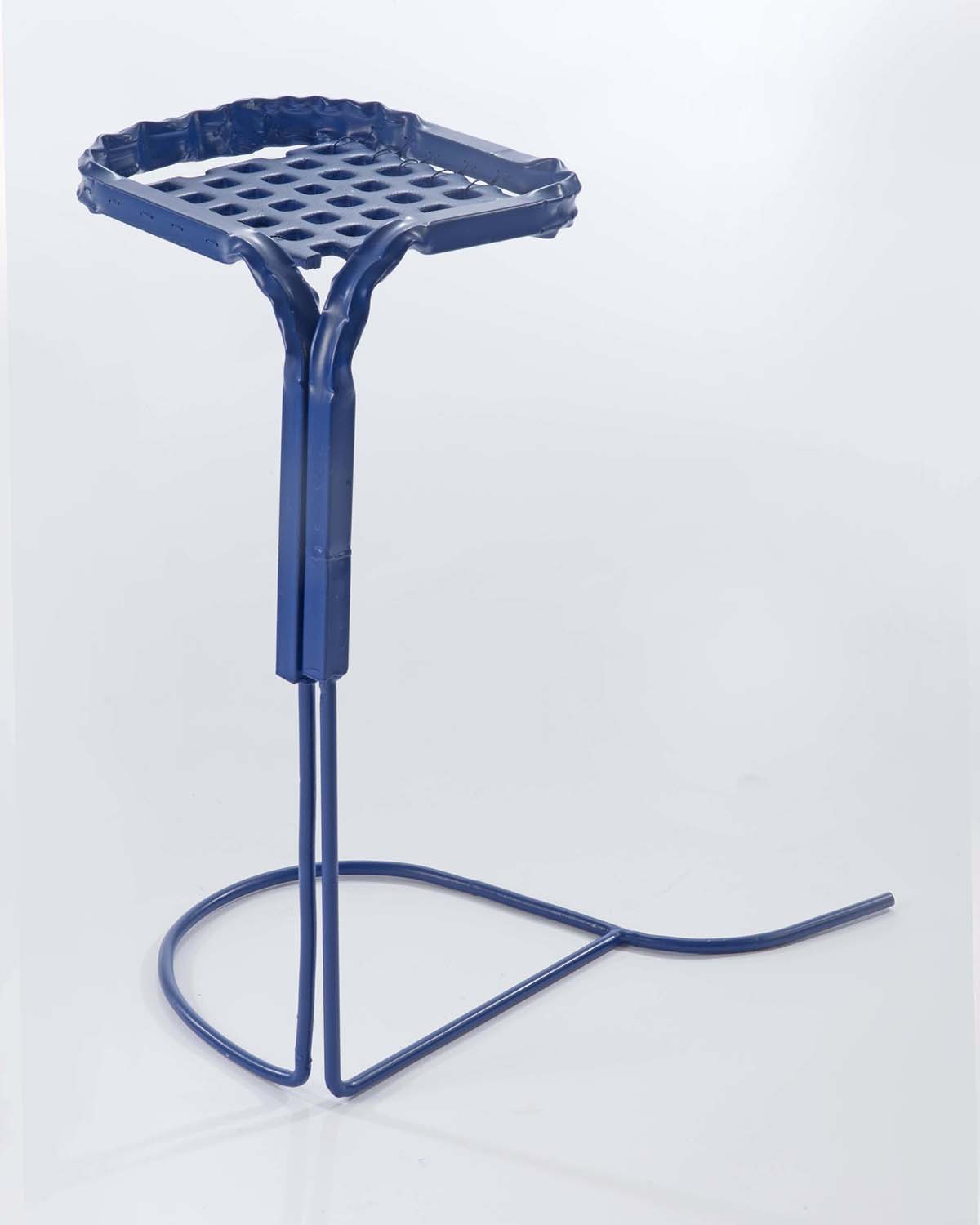
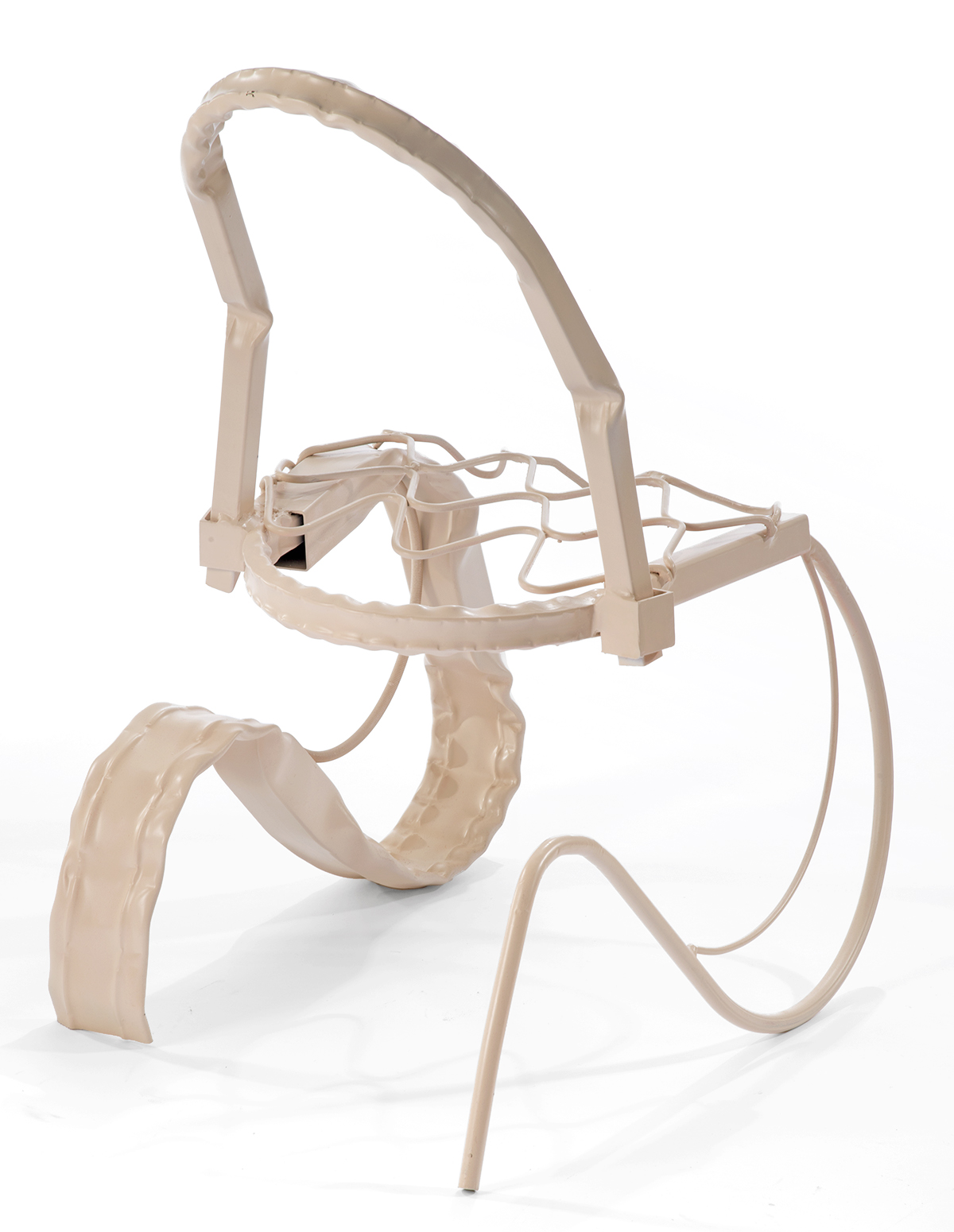
Lauren Goodman
‘”This Trash is Someone Else’s Problem’ reimagines object design practices through a decolonial lens that embraces responsive approaches to the local environment and the communities that steward it. The work was developed from discarded scraps of industrial waste harvested from the Providence area, such as wire fencing, oil drums, rebar and steel tubing. It was created without the use of expensive tools, machinery and materials in favor of a less extractive approach to design.”
